Sustainable Companies
Business travel Is India ready for takeoff?
How to take the Asian Gen AI opportunity

Sustainable Companies
Business travel Is India ready for takeoff?
How to take the Asian Gen AI opportunity
CEO CP GURNANI talks turnarounds, lifelong learning and the rise of AI

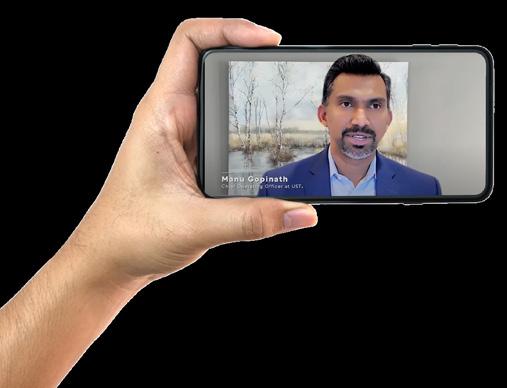
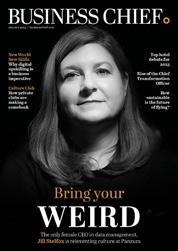
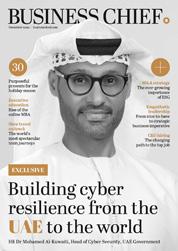
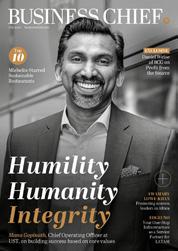

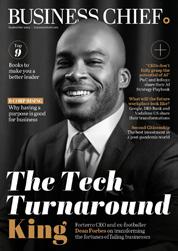












































Business Chief magazine is an established and trusted voice with an engaged and highly targeted audience of 670,000 global executives

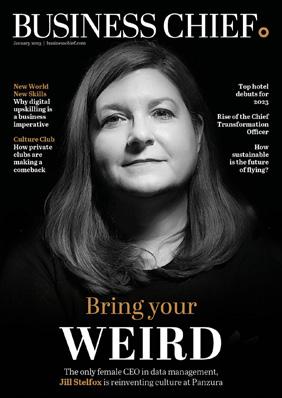
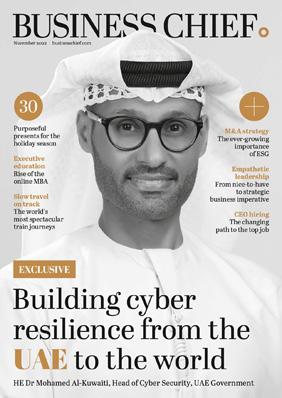







Digital Magazines

Website Newsletters
Industry Data & Demand Generation
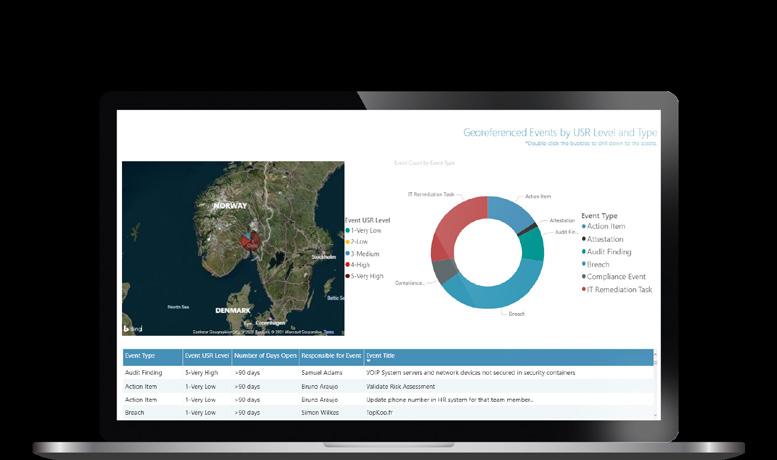
Webinars: Creation & Promotion
White Papers & Research Reports
Lists: Top 10s & Top 100s
Events: Virtual & In-Person
WORK WITH US

EDITOR-IN-CHIEF
SCOTT BIRCH
EDITORS
KATE BIRCH
TOM CHAPMAN
CHEIF DESIGN OFFICER
MATT JOHNSON
HEAD OF DESIGN
ANDY WOOLLACOTT
LEAD DESIGNER
MIMI GUNN
FEATURE DESIGNERS
SOPHIE-ANN PINNELL
HECTOR PENROSE
SAM HUBBARD
REBEKAH BIRLESON

JULIA WAINWRIGHT
VICTORIA CASEY
ADVERT DESIGNERS
DANILO CARDOSO
CALLUM HOOD
ADRIAN SERBAN
VIDEO PRODUCTION MANAGER
KIERAN WAITE
SENIOR VIDEOGRAPHER
HUDSON MELDRUM
DIGITAL VIDEO PRODUCERS
ERNEST DE NEVE
THOMAS EASTERFORD
DREW HARDMAN
SALLY MOUSTAFA
PRODUCTION DIRECTORS
GEORGIA ALLEN
DANIELA KIANICKOVÁ
PRODUCTION MANAGERS
JANE ARNETA
MARIA GONZALEZ
YEVHENIIA SUBBOTINA
KENDRA LAU
PROJECT DIRECTORS
THOMAS LIVERMORE
JAKE MEGEARY
RYAN HALL
TOM VENTURO
STUART IRVING
JAMES BERRY
MARKETING MANAGER
KAYLEIGH SHOOTER
MEDIA SALES DIRECTOR
JAMES WHITE
JASON WESTGATE
CHIEF COMMERCIAL OFFICER
JONATHAN CROPLEY
MANAGING DIRECTOR
LEWIS VAUGHAN
CEO
GLEN WHITE
Transformation can be both a challenge and a privilege. Regular readers of Business Chief will note that this issue marks the start of a new chapter in the 100-issue history of our brand, as we expand to now include four regional editions for truly global coverage.
You are reading Business Chief Asia & ANZ, and from today you can also enjoy insights and executive success stories from Business Chief Chief UK & Europe. Last month, we launched Business Chief Middle East & Africa and Business Chief US & Canada.

These four editions combine into a comprehensive deep dive into the challenges and opportunities facing CEOs, founders and public sector leaders right now, and in the future.
From Generative AI to Gen Z, green finance to black swans, Business Chief 4.0 has you covered with exclusive interviews, roundtable discussions, and the latest research and reports.
Striking a work-life balance, you will also see more Lifestyle content for our executive audience, especially on our reimagined websites.
SCOTT BIRCH Chief Content Officer, BizClik scott.birch@bizclikmedia.com
From Generative AI to Gen Z, green finance to black swans, Business Chief 4.0 has you covered
10 BIG PICTURE
Apple celebrates 30 years in China

12 LIFETIME OF ACHIEVEMENT
Shemara Wikramanayake – the woman shaping the future of climate finance

18 THE BUSINESS CHIEF INTERVIEW
Diane Wang – from Microsoft executive to ecommerce entrepreneur

26 TOP 10 Asia companies leading the charge for sustainable change

42 TECH MAHINDRA
New chapter for India's tech turnaround CEO
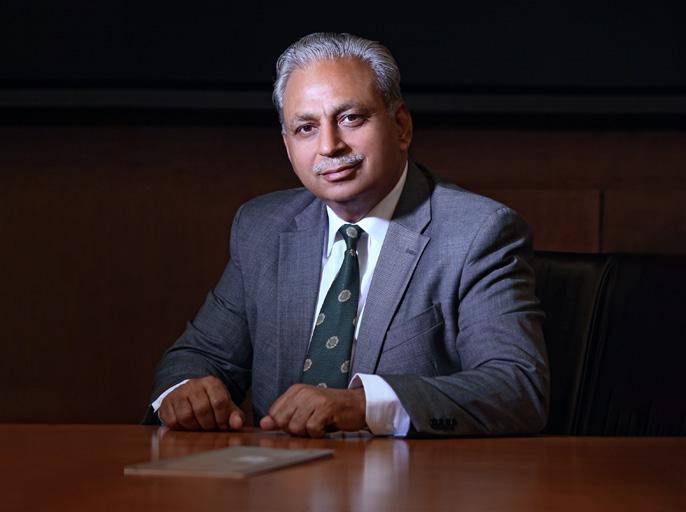
50 LEADERSHIP
The importance of shareholder value on Asian societies
58 LEADERSHIP
Driving transformation at the ‘world’s best bank’
66 PEOPLE & PLANET
B Corp: Asia’s next big business opportunity?



THE TOP 100 COMPANIES IN TECHNOLOGY READ NOW







74 SUSTAINABILITY
Why Australia must embrace digital reporting – or get left behind

82 SCHNEIDER
ELECTRIC
Schneider Electric provides sustainability leadership
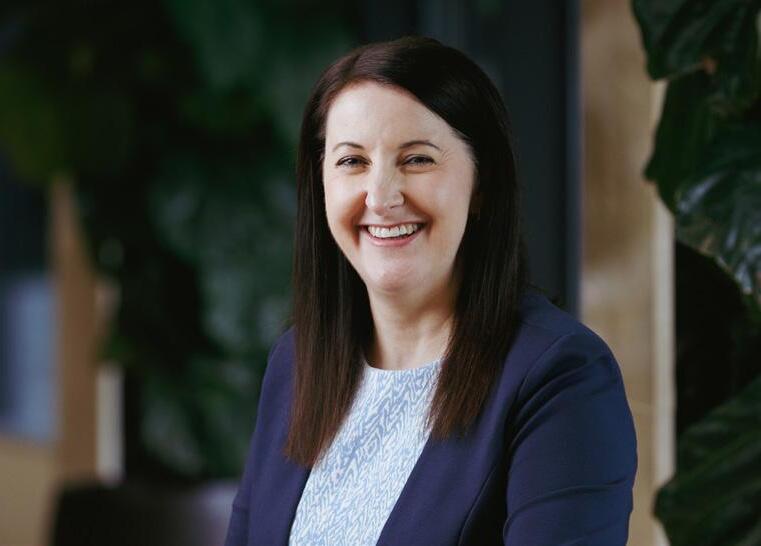
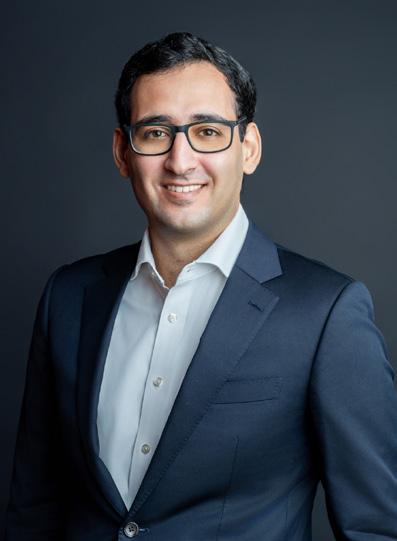
98 TECHNOLOGY
The risks and rewards of Generative AI opportunity in Asia
106 OKADA MANILA
How Okada Manila is taking full advantage of the AI boom

128 LIFESTYLE
Is India ready for takeoff?

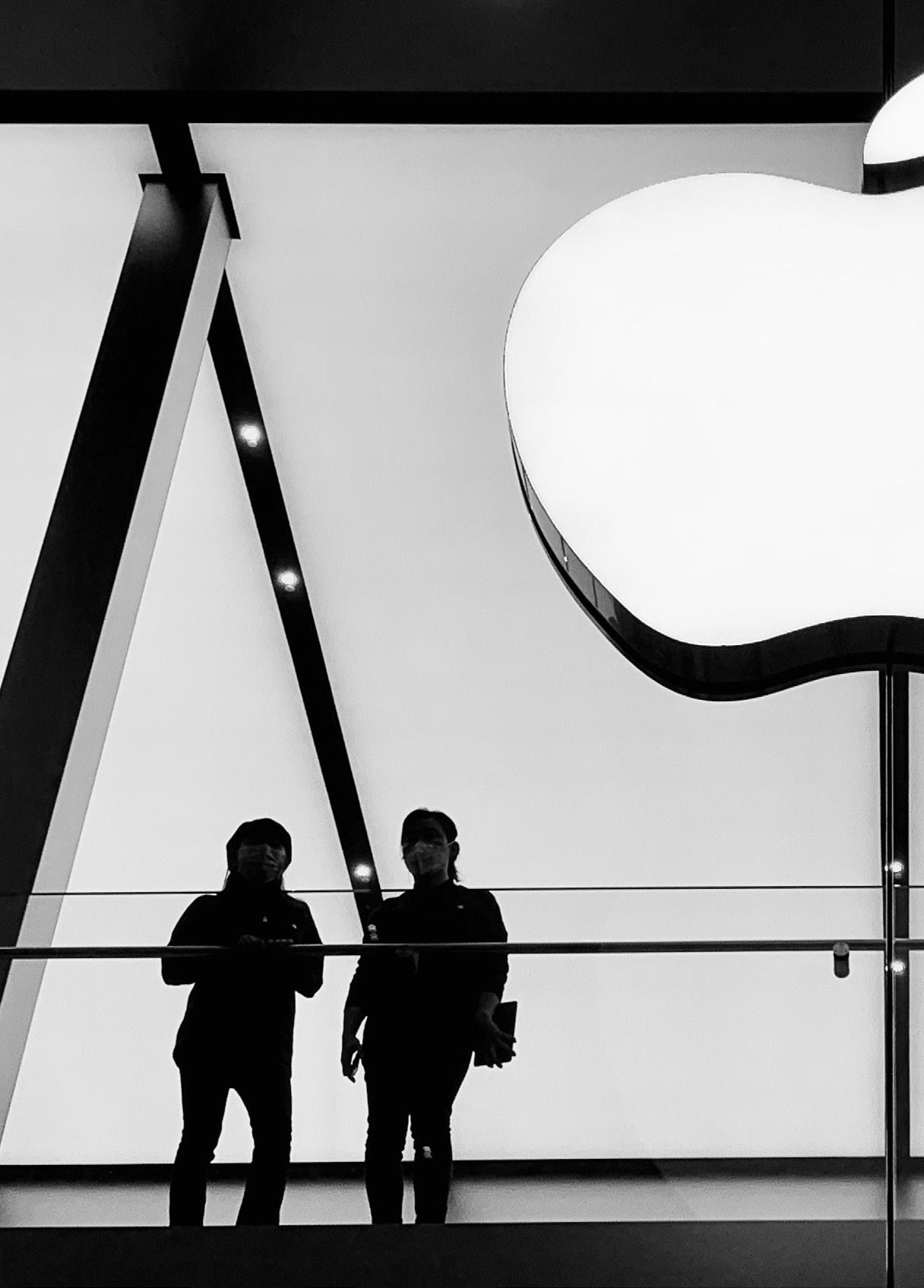
It’s been 30 years since China first took a bite out of Apple and in the three decades since, the iPhone maker has built a vast manufacturing operation there and taken a fair slice of the devices market.
Largely credited for Apple’s success in China is CEO Tim Cook who shifted the company’s production from the US to China where 95% of all iPhones, AirPods, Macs and iPads are made today.
Under Cook’s leadership, Apple’s China business has grown from a fledgling success to an empire with 20% of the company’s global revenues – amounting to US$74 billion in 2022 – hailing from China.

While Cook – who speaks Mandarin and takes frequent visits to China – remains committed to the country (announcing in March the expansion of a multimillion-dollar rural education programme there) he is also looking to diversify Apple’s manufacturing supply chains beyond China.
Increasingly bullish on India, Cook opened the first Apple store in Mumbai earlier this year and is now looking to set up iPhone manufacturing operations in the country.
Driving performance at Macquarie Group for 35 years, Shemara Wikramanayake has delivered record profits and secured a seat at the top table of climate finance
WRITTEN BY: KATE BIRCHThe lightning pace of the financial services industry leads to a clear divide – leaders who can’t keep up and those who set the pace.
Shemara Wikramanayake sits squarely in the latter camp, having been a driving force at Australia’s largest investment bank for 30 years.
Not only has the 61-year-old executive earned her financial leadership stripes, but she has done so successfully and seemingly without fuss as a woman in a male-dominated industry –scoring a hat-trick of firsts along the way.
As CEO since 2018, Shemara is the first woman to lead Macquarie Group, the first
Asian-Australian woman to lead an ASX 200 company, and the first woman to top reported earnings table for successive years –though her earnings are the lowest for a chief executive at Macquarie since at least 1999.
Being named the world’s fifth most powerful woman by Fortune prior to becoming CEO is perhaps testament to the influence she has wielded in her 35-year-long finance career.
And since securing the top job, her name has appeared regularly on consecutive power lists, ranking among global female financial greats such as Jane Fraser of Citigroup.
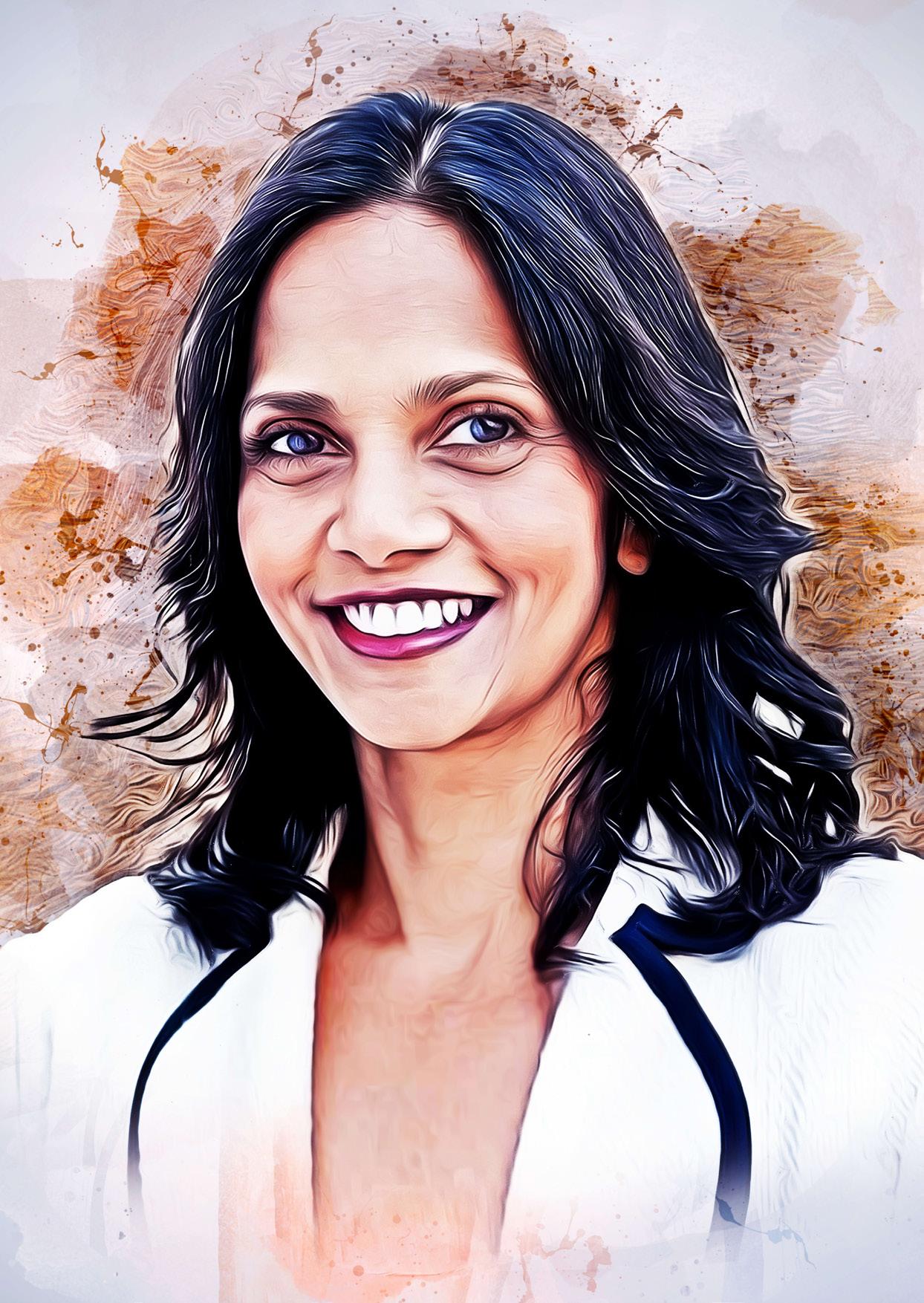

15
The number of different jobs Shemara has held in her three decades at Macquarie Group
9
The number of cities Shemara has lived and worked in spanning six countries during her career at Macquarie
58%
The percentage by which Macquarie Group earnings have risen in the four years Shemara has served as CEO
Shemara first cut her investment banking teeth in Sydney in 1987 aged 25 – when she turned her back on the legal profession in favour of banking – and Macquarie Capital.
In the three decades since, she has worked in six countries across numerous business lines, establishing and leading Macquarie’s corporate advisory offices in New Zealand, Hong Kong and Malaysia, and its infrastructure funds management business in the US and Canada – driving the emerging asset management division of the business.
As head of Macquarie Asset Management for 10 years, she managed a team of 1,600 and 24 markets and led the division to become a top 50 global public securities manager and the bank’s most profitable venture – an achievement that no doubt propelled her to chief executive status.
The secret to her success? Confidence and resilience, both characteristics she learned during her childhood, when facing financial hardship and living in three countries and five schools by age 13 she cultivated a “natural resilience”.
Her disrupted childhood gave her the strength to succeed and the confidence to be whoever she wanted to be, she said in a rare speech about her life back to the Melbourne Foundation for Business and Economics back in 2020.
“You shouldn’t restrict yourself to the box that you come in.”
That resilience (and attitude) has served her well, prepared her for life in the finance sector, where she has never been part of a majority, and for life as a leader in turbulent times.
In the four years she has been CEO, earnings have risen 58% to A$4.7 billion.
Shemara has led the global financial services group to record-breaking heights, with profits of US$3.5 billion in 2022, up 56% over 2021’s then best-ever financials.
Growth spans all four of the diversified company’s operating businesses, covering
six continents and activities including asset management, retail banking, renewables development, and capital raising.
Macquarie is now Australia’s ninth largest listed company by market value and its leading investment banker – with A$871 billion assets under management, 19,000 employees and offices in 33 markets. But the numbers are just one part of the story.
UK-born but of Sri-Lankan descent, Shemara has pushed herself and Macquarie into the heart of the global finance industry’s efforts to discuss, coordinate and advocate on climate change.
Just months into her role as Macquarie chief, she became one of only three CEOs to be named commissioner of the World Bank-led Global Commission on Adaptation and was further appointed as the founding CEO of the UN Climate Finance Leadership Initiative (CFLI) – working with others towards a six-fold increase in climate mitigation from the private sector.
This has seen her play a major role in consecutive COPs, most recently at COP27 in Egypt, where she joined various executive panels, including with former Bank of England head Mark Carney on unlocking climate finance for emerging markets, and with UN Special Envoy for Climate Action, Michael Bloomberg, on the importance of accessible, reliable and comparable climate data.
Her focus is to drive investments towards renewables and climate-resilient solutions and to help energy transitions of poorer countries.
She is leading by example too, moving Macquarie away from hydrocarbons and financing solar, offshore wind and hydrogen projects instead. Among her climate action
You shouldn’t restrict yourself to the box that you come in
TITLE: CEO AND MANAGING DIRECTOR
COMPANY: MACQUARIE GROUP
INDUSTRY: FINANCIAL SERVICES
LOCATION: AUSTRALIA
While Shemara kicked off her career as a corporate lawyer in Sydney in the 1980s, within a few years she had pivoted towards investment banking, joining Macquarie Capital in 1987.
In her three-decade-long career with Macquarie, she has served in leadership roles of increasing seniority from Hong Kong to Canada. As Head of Asset Management for 10 years, she led a 1,600-strong team in 24 markets.
Taking the company helm as CEO in 2018, Shemara has led the group to record profits and made significant inroads on climate action and the diversity agenda.
Passionate about both, Shemara is Commissioner of the Global Commission on Adaptation and a member of the UN Climate Finance Leadership Initiative, which seeks a six-fold increase in climate mitigation investment from the private sector.
hits, she led an effort to raise A$1 billion for renewables investment and more recently partnered with the UN’s Green Climate Fund on a project to get EVs and their charging infrastructure in place and operational, raising an initial US$205 million from institutional investors.
Her ambition for a smooth transition to green energy is matched only by her drive for diversity both in the community and the workplace.
As an ethnically diverse woman in the upper echelons of world finance, Shemara used her platform to advocate and action change for others.
Under her leadership, Macquarie has smashed its UK Women in Finance Charter female representation, 18 months ahead of schedule, and in India, ranked in the top 100 Best Companies for
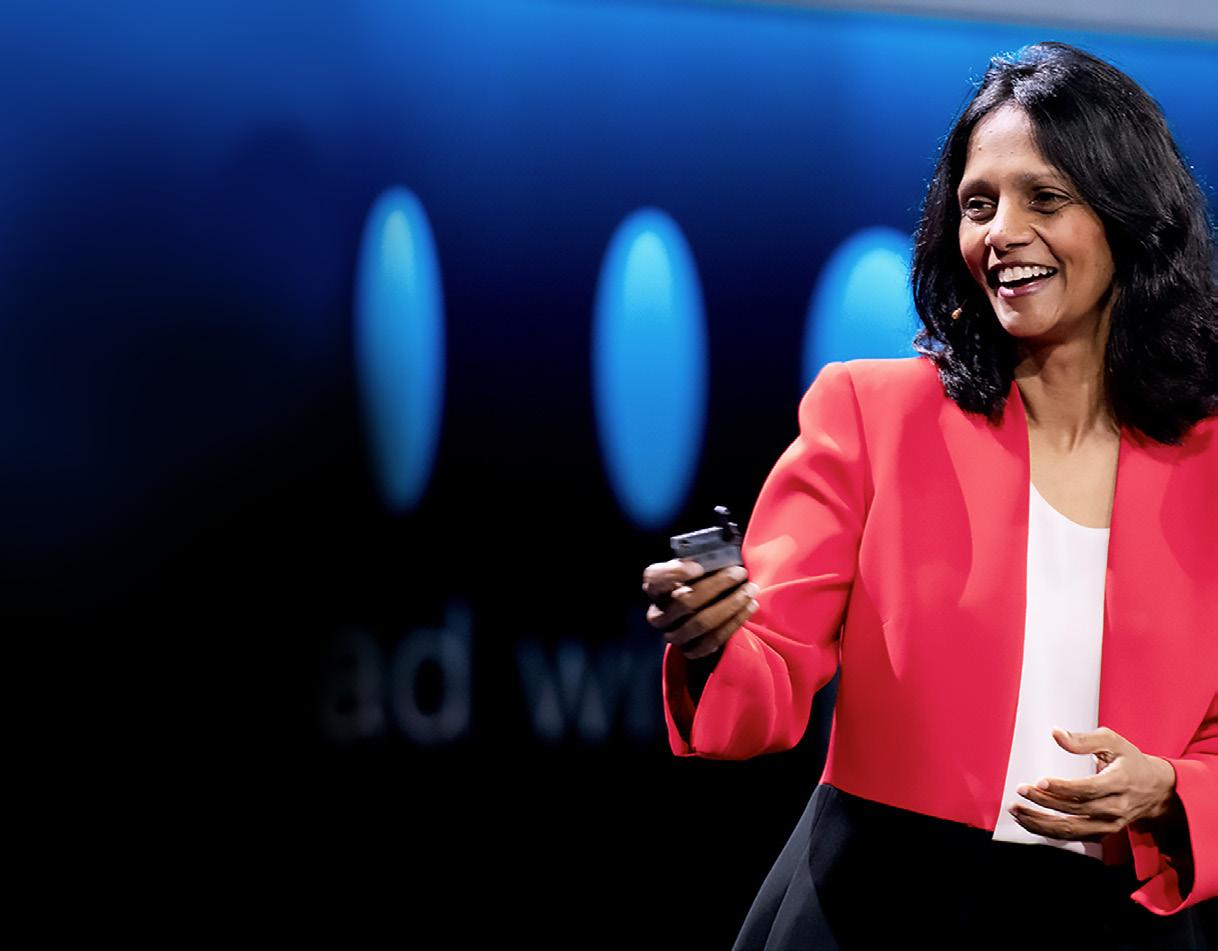
Women – a listing historically less common in investment banking circles.
Female representation has increased at all levels – with gender parity at board level and 21.8% at senior executive level, up from 17.2% in 2018. Under her watch, four in five roles filled globally last year had at least one female candidate on the shortlist and one or more female Macquarie staff on the interview panel, and women are being hired in greater proportion than the underlying application rate.
Shemara’s push for ethnic diversity in finance is equally forceful. At least half of Macquarie female employees identify as hailing from a culturally diverse background; while globally, more than a third of female directors identify as ethnically diverse.
“We need the richest possible combination of different ages, genders, cultural and racial backgrounds, diversity of sexual orientation and socio-economic backgrounds and experiences – and regardless of any disability,” Shemara told attendees during a Chief Executive Women Event in 2020.
It’s perhaps ironic then to consider the one inequality she continues to face.
Though she is the highest-paid CEO in Australia, Macquarie salaries based on profits, and the first woman to top the reported earnings table for successive years (2021 and 2022), Shemara is not the highest- paid executive at Macquarie.
She is also the bank’s first chief executive to be regularly paid less than her subordinates and, based on profits, is the lowest-paid since at least 1999.

We need the richest possible combination of different ages, genders, cultural and racial backgrounds…

CEO and entrepreneur Diane Wang discusses her journey from Microsoft China’s youngest executive to the first generation of ecommerce entrepreneurs
WRITTEN BY: KATE BIRCH
t takes a brave person to walk away from a leadership role in one of the world’s biggest tech companies – even more so, when they are trailblazing female leadership.
But that’s exactly what Chinese national Diane Wang did at the dawn of the new millennium.
Once the youngest director at Microsoft China, Diane was working at Cisco China in 1999 as the company’s most senior female leader when she made the ‘brave new world’ decision to chuck in the corporate towel and take the entrepreneurial highway.
This was the height of the dot-com boom and the year Alibaba set in motion its online shopping platform – and like Jack Ma, Diane spotted the potential in ecommerce and wanted in on the action.
Fast forward 24 years and Diane has founded and led two highly successful ecommerce companies – China’s first B2C trading platform, Joyo.com, which she built into the largest B2C marketplace in the country, and was later acquired by
Amazon; and DHgate – one of China’s leading ecommerce companies, which she continues to lead today.
In the process, she has helped millions of founders launch their own tech startups, sat on multiple boards, and earned dozens of honorary awards, including recognition among Forbes’ most powerful women and China’s top 10 influential leaders in IT.
While the decision to leave senior leadership in big tech wasn’t an easy one – for Diane, it was inevitable given her mission: to drive the digital inclusion agenda for entrepreneurs in China and empower women with the tools to succeed.
“When I left Cisco to start my entrepreneurial journey, I knew it would be a difficult path, especially as I was among the first generation of ecommerce entrepreneurs in China – but I was hopeful,” Diane tells Business Chief from DHgate HQ in Beijing.
During her six-year big tech tenure at Microsoft and Cisco, Diane witnessed and contributed to the then nascent but soon-to-
I KNEW I WANTED TO BUILD A COMPANY CULTURE THAT VALUES CULTIVATING FEMALE
FROM THE GROUND UP
 Diane Wang Founder, Chairperson, and CEO of DHgate Group
Diane Wang Founder, Chairperson, and CEO of DHgate Group
explode ecommerce environment – which was already visibly changing the lives of people throughout China.

“Ecommerce was democratising the landscape for entrepreneurs, allowing people who had never had the opportunity to start businesses due to structural reasons begin to have an equal choice and chance.
“I knew I had to be part of this, to expand this space and have an impact,” says Diane, who set up her first business Joyo.com during the birth of the ecommerce boom – growing the startup to such success, it was acquired by Amazon five years later.
This only fuelled the entrepreneurial fire in Diane’s belly, and having seen first-hand the impact ecommerce could have on people’s lives, she founded her second ecommerce startup, DHgate, in 2004 – with the mission to make global trade accessible by empowering everyone through digitalisation.
Growing a world-leading ecommerce company
Leveraging her more than 30 years of business and digital experience, Diane has built DHgate into the world’s leading cross-border B2B ecommerce infrastructure for micro, small,
“Successful leadership comes down to cultivating a positive culture. If you only care about profitable success, then you will attract only people who think the same way. But if you take a more nuanced approach to what success or failure means, and recognise that supporting people is just as important, then you will attract those with the same values – and that will make all the difference.
I value employee wellbeing and foster an environment that allows them to support each other. I have developed a concept called ‘Everyone is a dragon’, which signifies that every individual possesses the potential for greatness. As a leader, I consider it my responsibility to unlock and harness the potential and energy within each individual. This plays a vital role in everyone’s self-realisation and personal growth.”
and medium enterprises (MSME) – covering B2B commerce, retail, social commerce, logistics, and payments networks.
Within the first three years, the company secured 1 million registered buyers and ranked seventh in the Deloitte Technology Fast 50 for APAC.
Two decades of development later and DHgate has the largest market share in the US and second largest worldwide, with some 59.6 million global buyers from 225 countries, 2.54 million Chinese sellers and 34 million product listings. With a 1,000-strong workforce and offices worldwide, from Beijing to Paris to
California, DHgate works with more than 100 logistics service companies, provides over 100 logistics routes and has 10 overseas warehouses.
Little wonder then that the company continues to secure global accolades, recognised in 2023 alone by The Stevie Awards for being at the frontline of global trade and the internet industry, and ranked among the HURUN Chinese industrial IoT top 30.
Such success has propelled Diane to global trading heights. She was named a member of the High-level Advisory Council of the World Internet Conference in 2018 and is the sole representative from China to join the World Trade Organisation Business Advisory Group.
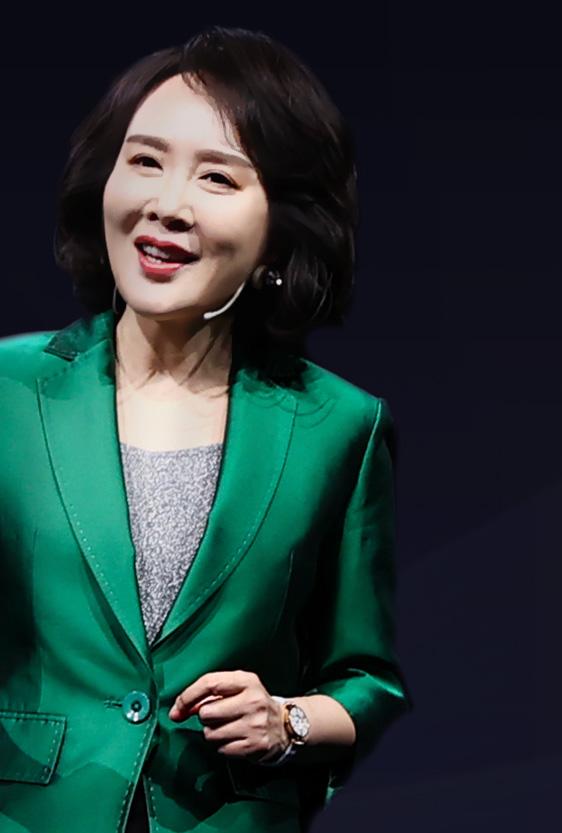
The critical focus for DHgate is empowering women and societies through digital inclusion –something Diane is especially passionate about. “Our future is digital, so I feel it is imperative to equip everyone with the resources required to move with the times.”
Spotting an opportunity to drive digital inclusion further, in 2020, Diane launched a new business under the DHgate Group umbrella – social commerce platform MyyShop.
“We began to see social media as a vital channel for entrepreneurs and founded MyyShop with a mission and passion for uplifting the young and underserved communities, especially women, students, stay-at-home mothers, the unemployed, or simply those who don’t want a conventional full-time job.”
Powered by big data, AI, and cloud computing, the platform aims to empower
China has been a pioneer in social commerce and is now the most developed social commerce market in the world, buoyed by its advanced influencer, creator and UGC economy. In 2022 alone, 84% of Chinese consumers shopped on social media platforms, Statista data reveals.
“Like China, many other Asian countries like India, Indonesia, and the Philippines are mobile-first cultures with increasing smartphone and internet penetration, and therefore also have a high social media use rate,” says Diane.
Naturally, this has created a huge opportunity for social commerce in Asia, especially with the growing influence of social media on people’s daily lives and as users and consumers demand speed and simplicity in everyday tasks such as shopping.
“Social commerce combines the best of both traditional retail and e-commerce to provide consumers with convenience and genuine product advice and recommendations.”
different types of creators – from nano to meta-influencers – to turn their social media influence and passion for content creation into thriving online businesses.
MyyShop has grown quickly to 60,000 creators, US$500 million in gross merchandise value and more than 100,000 collaborators in 2022 alone.
“Social media and by extension, social commerce, is opening up an entirely new channel for entrepreneurs to be successful and practical digital skills and tools are key to cultivating this next generation of entrepreneurs.”
This is especially true for women – who still face a very high barrier when it comes to gaining the knowledge and skills needed to start and succeed as an entrepreneur, says Diane.
Recent research from the APEC Business Advisory Council found that 63% of women from MSMEs reported they felt they had a lack of professional skills and more than 50% needed training in digital tools.
Attracting funding as a female entrepreneur is equally challenging, given that a staggering 90% of VC decision-makers are men, who in turn invest 86% of their capital in male leaders.
“My unchanged belief is that women should help women,” says Diane – and as a firstgeneration female entrepreneur in China in the internet era, that is exactly what she is doing.

As well as empowering female entrepreneurs via her digital platforms, she is cultivating female leadership culture within the company.
“I knew I wanted to build a company culture that values cultivating female leadership from the ground up. At DHgate, we’ve been
able to not only build a global company, but to maintain a supportive environment for employees and stay true to our mission of empowering women and underserved communities with entrepreneurship.”
Diane has taken her passion for supporting women beyond the four walls of her business and works closely with international organisations and associated working groups to support female economic participation and promote gender equality and inclusion.
She has taken on leadership advisory roles at various international organisations, including the APEC Business Advisory Council (ABAC), Business 20 (B20), and BRICS Women’s Business Alliance with an aim to “connect the dots across different organisations, coordinate efforts, maximise resources, and more importantly increase visibility to get women’s voices heard”.
“I want to make sure that female entrepreneurs are given every chance to pursue their business ambitions. This means tearing
down barriers that have traditionally slowed or halted progress, while introducing new pathways for success.”
Diane launched a digital capacity building programme in 2014, and has trained more than 100,000 MSMEs from more than 50 countries; and in 2016, she founded APEC Women Connect (AWC), a digital entrepreneurship community which convenes female entrepreneurs, policymakers and business leaders for networking, e-learning and mentorship.
Not one to stand still, Diane is now building a new community, providing mentorship, support and recognition for young female entrepreneurs in the digital sector.
“I believe it is critical that we keep improving, updating and expanding these types of programmes to help more women grow their businesses more quickly and effectively.
“It is a long road to achieving gender quality and empowerment in entrepreneurship, but we have to keep pushing.”
ENTREPRENEURIAL JOURNEY, I
IT WOULD BE A DIFFICULT PATH, ESPECIALLY AS I WAS AMONG THE FIRST GENERATION OF ECOMMERCE ENTREPRENEURS IN CHINA

When it comes to ESG adoption, Asia is lagging Europe and the US.
The continent accounts for the most global carbon emissions – 17.7 billion tonnes of carbon dioxide was generated by energy from Asia in 2021, compared to 5.6 billion from North America.
Recognising this, Asia’s largest economies are stepping up efforts to increase emphasis on ESG, while eight in 10 countries in Southeast Asia have pledged a target of netzero emissions by 2050.

HKEX now requires listed companies to report KPIs on ESG, and the Singapore Exchange leads the way in urging boards to acknowledge ESG reporting requirements.
This, coupled with other regional regulations, is upping the ESG ante, with 30% of Top 2000 corporations in Asia predicted to monitor ESG performance in 2023, IDC research finds.
Some companies are already putting sustainability front and centre.
From reducing operational emissions to pioneering sustainable solutions – here is our list of ten companies leading the charge for change.
These Asia-based companies are putting ESG at the heart of their operations, and pioneering industry solutions to shape a more sustainable world
Founded: 2014
Headquarters: Shanghai, China
CEO: William Li
Number of employees: 26,000+
As well as manufacturing and selling premium smart EVs, NIO drives innovation in next-gen technologies in autonomous driving, electric powertrains and batteries, including its industry-leading battery swapping technologies.
The EV pioneer, which recently raised US$800m from the Abu Dhabi government, commits to promoting full-lifecycle carbon footprint management, energy conservation, and emissions reduction. In 2022, NIO launched the Clean Parks initiative to support the use of smart EVs in nature reserves worldwide and construct clean energy infrastructure – and has further created the world’s first photovoltaic self-consumption system with V2G charger.
The Shanghai-based company, which saw vehicle sales increase 103.6% YoY in July, has also established an ESG Committee and steering team.

Founded: 1968
Headquarters: Singapore
CEO: Piyush Gupta
Number of employees: 36,000
The first bank in Singapore to sign up to the UN Net-Zero Banking Alliance, DBS Bank is credited for its work in facilitating the transition to clean energy in Asia.

The bank has won awards for its work in green bonds, and as of March, grew its sustainable finance portfolio to SGD 61 billion, providing loans, bonds, and trade financing to accelerate companies’ transition into sustainable business models. Among projects, the bank financed two of the largest floating solar projects in Asia.
DBS has transformed its own operations to be more energy-effective and is empowering employees to adopt a zero-food waste lifestyle. In 2022, the bank established the first net zero building in the city-state.
Founded: 1971
Headquarters: Hong Kong
CEO: Robert Ng
Number of employees: 7,000
Hong Kong property developer Sino Land has earned its sustainability stripes this year with inclusion in the S&P Global Sustainability Yearbook, placed among the top 15% of real estate firms, and a MSCI ESG rating upgrade to AA.

One of the first real estate developers in Hong Kong to publish climate-related financial disclosures and the first to develop a climate risk assessment tool, Sino has signed up to Business Ambition for 1.5C as it targets net zero by 2050.
Driving its green building portfolio is the board’s sustainability committee, which has set 38 goals, from transitioning to a circular economy to preserving urban biodiversity. They have also established the Sino Sustainability Academy empowering leaders to keep up with practices.
Founded: 1940
Headquarters: Hong Kong
CEO: Roberto Guidetti
Number of employees: 7,000+
With the understanding that the food system accounts for over 25% of all greenhouse gas, leading F&B manufacturer Vitasoy is driving the plantbased sector in Asia.

With 89% of its products plant-based, including plant milks, teas and tofu, Vitasoy is committed to sustainable farming, best manufacturing practices, circular waste processes, and community engagement – and has seen revenues double in the last decade to almost a billion US dollars.
Raw materials are sourced mainly in mainland China and follow strict sustainable farming practice guidelines. Exporting to more than 40 countries, products are packaged in FSC-certified cartons. The company’s Singapore business is now certified B Corp.
Founded: 1933
Headquarters: Mumbai, India
CEO: Rohit Jawa
Number of employees: 21,000
The Indian arm of Unilever, HUL is the FMCG giant’s biggest business in sales volume and among India’s most valuable companies. Renowned for its purpose-driven brand campaigns and for championing change across India, HUL ranked among the top 10% S&P Global ESG firms in 2023 for the first time.

Since 2008, HUL factories have seen a reduction in waste (55%), water usage (48%) and CO2 emissions (97%) with 100% of electricity now sourced from renewables. HUL has also secured sustainable sourcing for 95% of its total paper and board and 69% of its tea.
HUL recently set up the pioneering Centre for Sustainability Leadership, aimed at helping other Indian businesses achieve net-zero.
Founded: 1985
Headquarters: Taichung City, Taiwan

CEO: Young Liu
Number of employees: 10,000+
The world’s largest bicycle manufacturer, Giant has grown over 50 years into a world-renowned brand with revenues in H1 2023 of US$1.34 billion –35% came from e-bike sales.
With a focus on circularity, from packaging to materials, Giant has established an industry sustainability alliance (BAS) to work towards more sustainable practices and work with suppliers to track carbon emissions of various parts. Giant uses tire recycle carbon reduction technology, recycles and reuses carbon fibre, and utilises solar technology across four factories.
The company is on track to reduce CO2 emissions by 40kg per bicycle by 2030 and achieve 100% plastic-free packaging. They also offer a popular pre-loved bicycle programme.
Founded: 1928
Headquarters: Japan
CEO: Toshimitsu Talko
Number of employees: 39,000+
Japanese multinational Konica Minolta has put sustainability centrestage since 2003, an approach that has won the firm numerous accolades, from CDP Climate A List status to inclusion in the top 5% of sustainable firms by S&P Global.

With a legacy spanning 150 years and presence in 150 markets, the company commits to reducing 60% CO2 emissions in its product lifecycle by 2030, net zero by 2050. Already, its MFP factories in China and Malaysia and European HQ are 100% powered by renewables.
The US$4.43 billion firm invests heavily in innovation, from digital manufacturing to smart workplaces, and sales of products certified as sustainable hit a healthy 77% of all sales in 2021.
Founded: 1986
Headquarters: India
CEO: CP Gurnani
Number of employees: 152,000
One of the few organisations to prioritise ESG early on, embedding principles into its core strategy, Tech Mahindra emerged as the global IT leader in the DJSI Index in 2021. Forming part of the Mahindra Group, the US$6.5 billion tech company focuses on leveraging nextgen technologies to enable end-to-end digital transformation for its 1,297 global customers.
As a signatory to 1.5C Supply Chain Leaders and the ESG Center of Excellence, the IT major has pledged carbon neutrality by 2030 and 50% renewable energy mix by 2025. The firm has implemented the Green Tuesday Initiative, cutting down serving meat by 20% across all offices in India to reduce food-related carbon footprint.

Founded: 2009
Headquarters: China
Chairman: Dr Lee Yin Yee
Number of employees: 7,000+
A subsidiary of Xinyi Glass and parent of Xinyi Energy, multi award-winning Xinyi Solar is the world’s largest solar glass manufacturer.
As well as promoting and supporting renewable energy in business, with a target to meet 40% of annual global demand for new PV installations by 2050, Xinyi Solar is also working

to lower emissions within its own operations –with energy and water consumption reduced in 2022 by 15.1% and 7.8%, respectively.
The solar farm projects held by the Group generated 4.4 billion kWh of electricity last year, resulting in a reduction of 3.64 million tonnes of CO2 emissions, equivalent to 92.6% of GHG emissions from solar glass production in the same period. Among its many farms, the world’s first large-scale floating solar farm in Xinyi, which has the potential to save 28,000 tonnes of standard coal every year.

Along with an A- ESG rating on the Hang Seng Index, Xinyi Solar has outperformed its peers in global ESG ratings, including CDP and S&P Global.

A brief history of Taiwan’s high-speed rail



Founded: 1998
Headquarters: Taipei, Taiwan
CEO: James Jeng
Number of employees: 4,700+
As the high-speed railway of Taiwan, THSRC provides safe and fast transportation services for commuters. Through smart technology, the railway operates one 350-km railway line along the west coast of Taiwan with trains running at 300-km per hour, achieving 99% punctuality and no accidents.
Widely recognised for being green, THSRC stands out for its sustainable investment and low-carbon emissions compared to railway counterparts. THSRC undertakes greenhouse gas inventories, promotes waste reduction, and saves electricity – conserving 12.38% more per passenger in 2022 than the year before.
Not just that, but the railway promotes energy-saving initiatives at its solar-powered maintenance depots and stations and has also set up wastewater treatment plants at specified stations. Around one-third of waste is recycled, while the rest is incinerated, and the company further pledges to the reduction of waste among suppliers.
Committed to decreasing carbon emissions by 50% by 2030 and 75% by 2050, THSRC was the nation’s first public transport service to issue green bonds to fund its sustainability projects.
Among recent green accolades, THSRC was ranked in the top 10 most sustainable companies in the world by sister publication Sustainability Magazine and by Corporate Knights


















Having led one of the biggest turnarounds in Indian corporate history, Tech Mahindra CEO CP GURNANI sits down with Business Chief to talk future challenges, lifelong learning, and the rise of AI
 WRITTEN BY: KATE BIRCH
WRITTEN BY: KATE BIRCH
December 19 2023 will be bittersweet for Chander Prakash Gurnani. As well as being his 65th birthday, the celebration of that arrival will also mark his departure from Tech Mahindra – the company he has led as CEO for 14 years.
Digital transformation specialist Tech Mahindra has evolved and thrived under his reign, leveraging emerging technologies like cloud computing, artificial intelligence, data analytics, the metaverse and Internet of Things (IoT) to drive innovation and efficiency in business processes.
CP, as he is affectionately known by friends and colleagues, has built his reputation on the ability to transform, so this passing on of the baton – to former Infosys boss Mohit Joshi on December 19 – is a natural progression rather than the end of the CP story.
“I don’t think I am even close to retiring. I will be shifting gears in my life and transitioning into a new phase as a ‘coach’,” he tells Business Chief, in an exclusive interview.
“I have dedicated a significant portion of my life to the tech industry, starting as a professional and attaining the position of CXO at age 38. Having served as a captain in this field for an extensive period, I believe it is time to explore a different perspective. I want to pursue endeavours that deeply resonate with my passions and values. I see it as a good time to embark on this personal journey of self-discovery after a long, fulfilling career.”
That impressive career saw CP join Tech Mahindra in November 2004 after 18 years as Founder and CEO of Perot Systems India. He has won dozens of awards in that time having led Tech Mahindra’s remarkable transformation journey – and one of the biggest turnarounds of Indian corporate history.
IT IS IMPORTANT TO ME TO LEAVE A LEGACY AT TECH MAHINDRA THAT REFLECTS MY SUCCESSES AS A VISIONARY, STRATEGIC THINKER, AND AMBASSADOR FOR MY COUNTRY
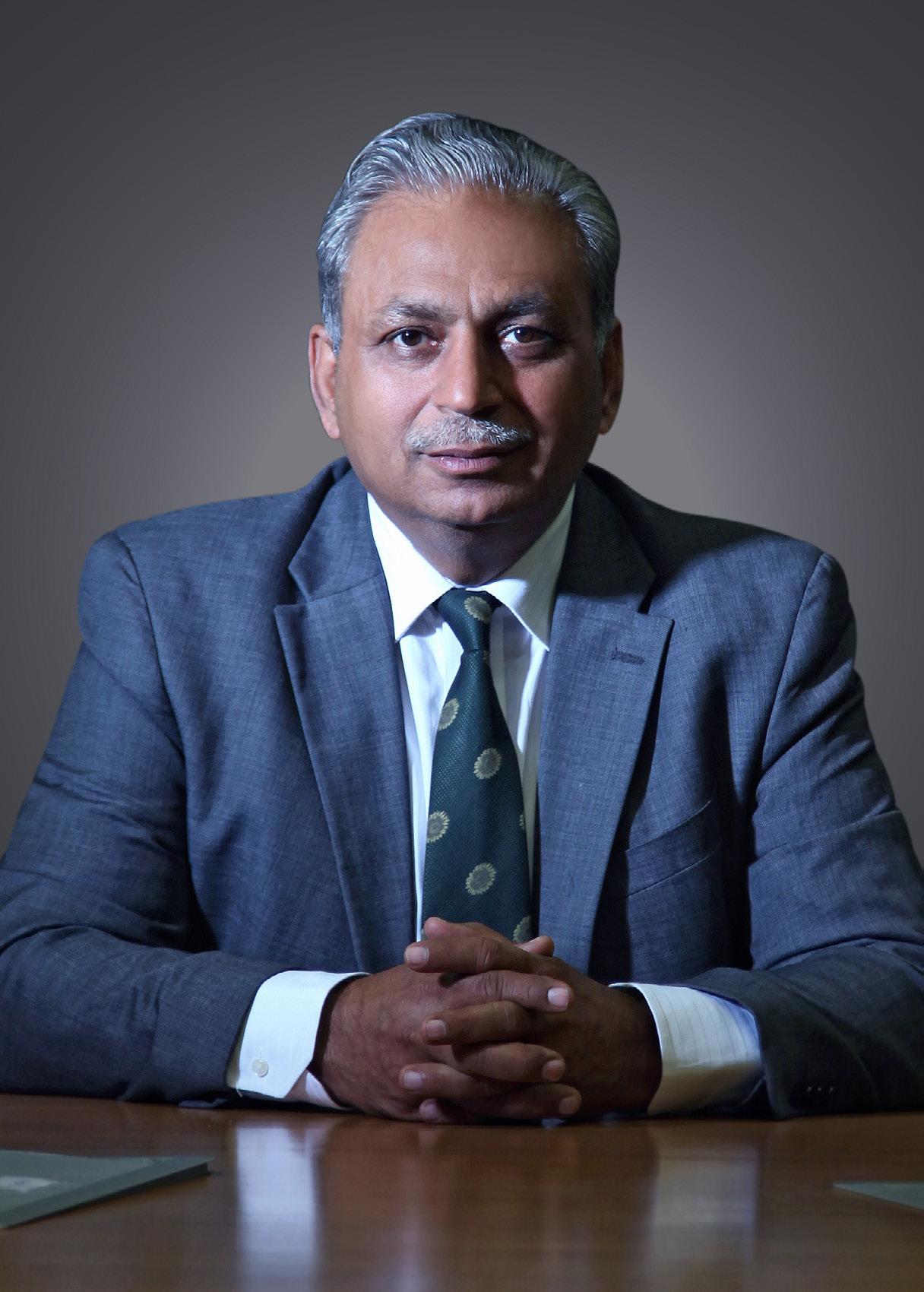
14
152K
90
“Leaders must embrace 4Ps in their professional life – Purpose, Passion, People, and Performance. As leaders, we must be open to new ideas, encourage a culture of innovation, and provide an environment where employees can experiment and learn from failures.
They must follow a customer-centric approach and seek opportunities to collaborate with other organisations, startups, academia, and even competitors to drive innovation, address complex challenges, and foster ecosystem growth. Finally, leaders in the tech industry must respond quickly to market dynamics, customer needs, and emerging trends. Challenging the status quo is the only way we progress.”
His single biggest business achievement was the acquisition of Satyam Computers which has even been featured as a Harvard case study.
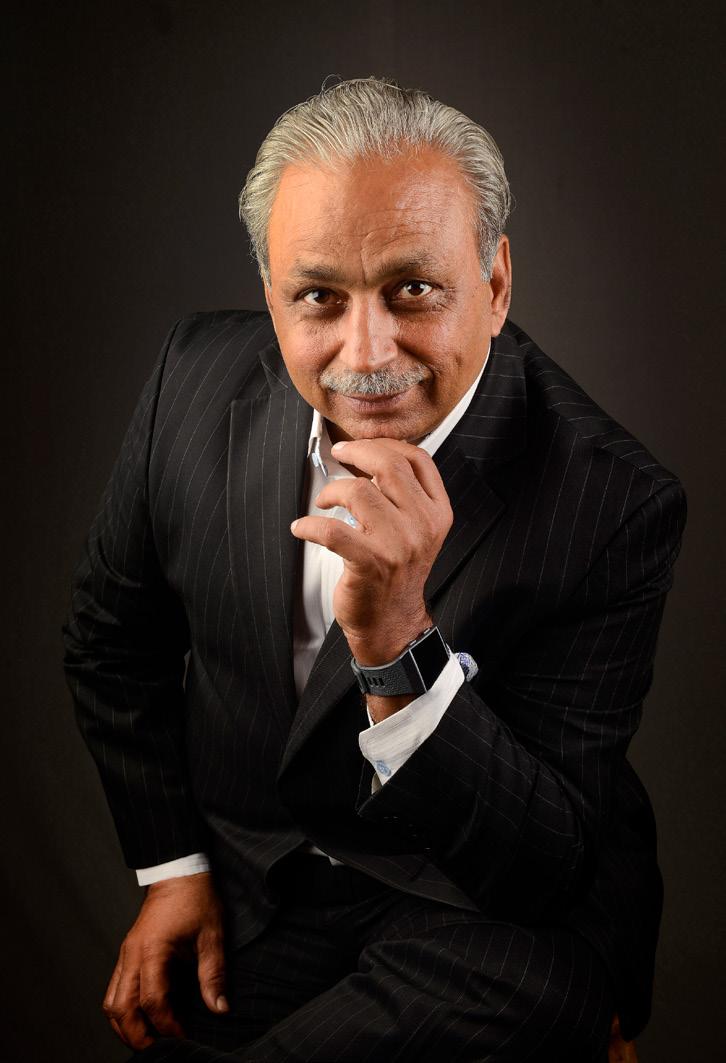
“Navigating the Titanic called Satyam was truly a defining moment in India’s corporate history – it established Tech Mahindra as a turnaround and people-centric company,” says CP.
“We turned a crisis into an opportunity. The merger, that now seems like a perfect match, came with its own share of challenges, including lawsuits. The learnings are some of the best in my life.”
CP describes the Satyam acquisition as a “daring and caring” effort where many difficult decisions had to be made to provide a leadership that was honest, credible, and decisive.
Corporate governance, shareholder value protection, business and revenue
management, transparent communication and talent management were the other high priority agendas that had to be set right.
“For me, recognition and awards are purely incidental,” he adds. “My underlying philosophy is that when I wake up in the morning, nobody owes me anything. I must find my place in this world. It has been my constant endeavour to create new benchmarks of excellence. It is important to me to leave a legacy at Tech Mahindra that reflects my successes as a visionary, a strategic thinker, and an ambassador for my country.”
Talking of strategic thinking, Business Chief is interviewing CP on the sidelines of a new chess tournament launched in Dubai and with Tech Mahindra as sponsor. It’s a logical fit and, as ever, CP is looking to transform –invigorating this rather cerebral activity into something of a spectator sport in the form of the Tech Mahindra Global Chess League.
For those interested, Triveni Continental Kings beat upGrad Mumba Masters in the final, with Denmark's Jonas Buhl Bjerre beating Javokhir Sindarov in a sudden death match.
The game provides many useful analogies for the world of business, and CP is not slow to use chess terminology when it comes to reflecting on some of his biggest challenges.
“I look at both challenges and opportunities with excitement. A leader creatively finds opportunities from the challenges and checkmates them,” he says.
“The resilience that a business develops in the face of disruption can provide a new foundation for growth and success. I have witnessed and dealt with many such complex scenarios in my career. The encouraging news is that we have not only persevered but have emerged stronger and more resilient from those challenges.”
When it comes to challenges, CP has steered Tech Mahindra through some
I REMAIN STEADFAST IN MY FAITH IN THE INDIAN TECH ECOSYSTEM’S ABILITY TO CREATE AI FOUNDATION MODELS ON PAR WITH – OR ABOVE – GLOBAL STANDARDS
blockbusters. Back in 2008 there was the global financial crisis. Then came Covid-19. Many countries around the world adopted a lockdown strategy, but none bigger than India, when PM Modi ordered a nationwide, three-week lockdown for the entire 1.3 billion population.
Interestingly, Tech Mahindra was one of those organisations that made major moves during the dark days of the pandemic.
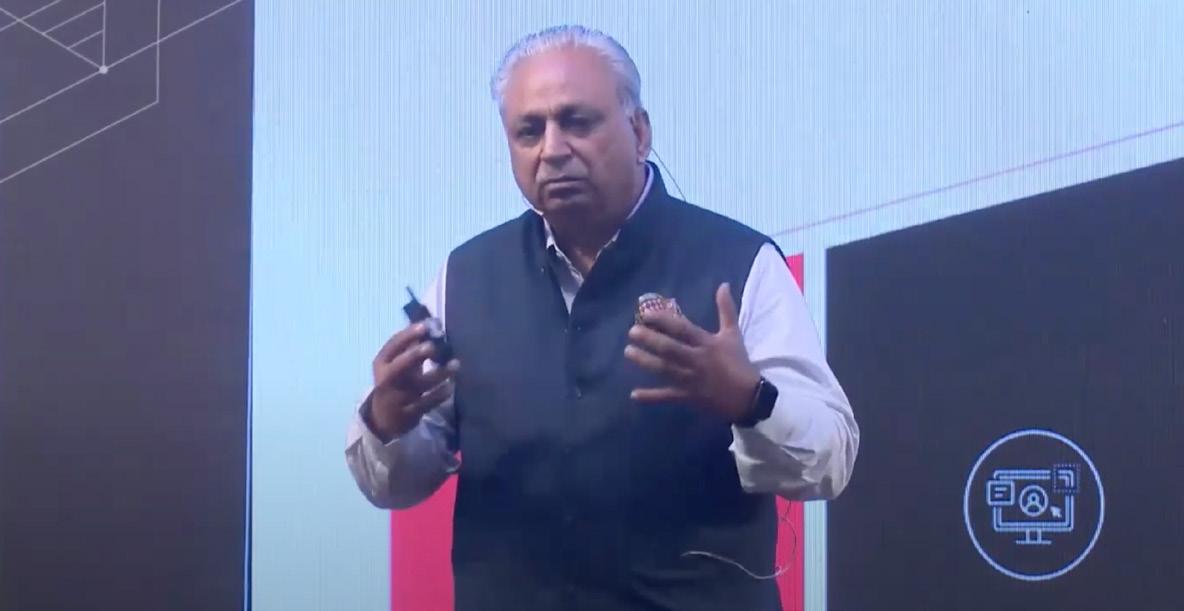
According to Brand Finance, the digital transformation consultancy’s brand
value soared by 66%, making it the fastest growing in the top 25 IT services brands.
Aside from ‘obvious’ global crises, CP cites attracting and retaining top talent as one of the IT industry’s ongoing battles. Then there is expanding into new markets while managing cultural differences, regulatory complexities, and operational challenges – which all present tests of leadership and organisational agility.
“My working style has always been inclusive, adaptable, and customer-centric,” says CP.
“Identifying emerging trends and technologies helped me steer Tech Mahindra in the right direction and stay ahead of the competition.”
When it comes to the Next Big Thing, there is only one show in town – artificial intelligence.
CP actually found himself in a chat faceoff with OpenAI founder Sam Altman recently when the ChatGPT chief suggested Indian tech startups would never be able to match what his company had achieved. CP simply said on social media ‘challenge accepted’.
“I remain steadfast in my faith in the Indian tech ecosystem’s ability to create AI foundation models on par with – or above – global standards,” CP tells Business Chief
“India has been making significant strides in the field of artificial intelligence and hasa strong foundation to become a global leader in the AI space. The country has a large pool of highly skilled IT professionals, a thriving startup ecosystem, and a supportive government that recognises the importance of emerging technologies like AI.
A joint venture between Tech Mahindra and The International Chess Federation (FIDE), The Global Chess League took to the Dubai stage this summer for its inaugural edition. Set to transform the world of chess, this one-of-a-kind initiative delivers a neverbefore-seen format from all over the world to compete in a unique joint team form that focuses on diversity and technology. The league features male and female chess champions competing on the same team and is the first-ever Live televised chess event of its kind. Offering a new way of viewing chess, the league is leveraging nextgeneration technologies, from AI to VR, to offer fans an engaged and interactive viewing experience.

When considering the future of shareholder value, we have to look at the history. You have to go back to the dark economic times of the 1970s – a period of global stagnation. Open the pages of The New York Times and you’ll find an essay by a certain Milton Friedman titled ‘The Social Responsibility of Business is

The concept of shareholder value is changing but is more important than ever as companies in APAC look for long-term profits for social stability
to Increase its Profits’. Economist Friedman effectively said that an organisation should show no regard or responsibility for anything other than its shareholders.
As often happens with unpopular new concepts, it took a few years for other voices to echo Friedman’s doctrine, and it was not until the 1980s that the pursuit of
shareholder value at any cost became the new purpose for doing business.
And it worked. Shareholders made fortunes, and stock exchanges from New York to London to Tokyo all benefitted – right up to the 2008 financial crisis which pulled the plug on Gordon Gecko’s ‘greed is good’ mantra.

Or did it? Has the relentless pursuit of shareholder value at all costs gone out of fashion in the face of sustainability and societal pressures? And what difference does it make if you are a company based in Denver, Dusseldorf, Dubai or New Delhi?
One fact is certain – you cannot ignore the importance of shareholder value in the APAC region.
According to the latest available data from the World Bank (which is admittedly a couple of years old but important for context), the market capitalisation of domestic listed companies in China – the regional leader – is US$12.21 trillion.
While China’s total may be dwarfed by the likes of the US (US$40.72 trillion), it is way ahead in APAC and ANZ. Japan’s listed companies market cap comes in at US$6.72 trillion, India has US$2.6 trillion, and South Korea US$2.18 trillion. In ANZ, Australia sits on US$1.72 trillion, and New Zealand on US$132 billion. This highlights disparity around the world, with some
countries having more of a focus on government- or familyowned large businesses, making the idea of shareholder value in those countries less significant.
The very concept of ‘value’ also varies regionally, so what do CEOs need to know about the changing nature of shareholder value?
Shareholder value as important today as ever “Different corporate governance systems, legal frameworks, and cultural norms exist across regions globally,” says Barbara Spitzer, Founder and CEO at Two Rivers Partners and a former senior executive at Accenture.
“The prominent stakeholder model in Europe and Japan sees corporations as social institutions responsible for stakeholders, including employees, customers, suppliers, and the local community, not just shareholders.
“Japanese firms often focus on long-term stability and growth, sometimes at the expense of short-term profits. Shareholder value is essential, but it's balanced against the interests of other stakeholders.
“Swinging in the opposite direction is what we see in China, where corporations often follow a state capitalism model, where the government plays a decisive role in the economy. These companies may prioritise national economic goals, such as employment, social stability, or strategic industrial growth, over immediate shareholder value.”
Harry Turner, founder of The Sovereign Investor says that shareholder value may be more relevant today than ever – especially with an ageing population to consider. As Baby Boomers enter retirement and live longer, it will become increasingly critical for the private sector to generate enough wealth to support this demographic.
By focusing on shareholder value, corporates alleviate this problem in two ways. Firstly, the more money they make, the more they contribute to government tax revenues, which helps fund state pensions. Secondly, the more shareholder value they create, the more likely their share prices rise too, which directly benefits savers who own financial assets in their retirement portfolio.

Japanese firms often focus on longterm stability and growth, sometimes at the expense of short-term profits
Barbara Spitzer Founder
CEO, Two Rivers Partners
Craig
Craig is the New York Times bestselling author of ‘The Caterpillar Way. Lessons in Leadership, Growth and Shareholder Value’. He founded three companies that achieved roughly US$1 billion of revenue within 18 months. Craig was a finalist for the prestigious Platts S&P CEO of the Year award in the global metals industries in 2018.

Barbara
As an advisor to boards, CEOs, and business leaders, Barbara helps transform businesses. She leverages her skills across industries, solving complex problems, reimagining workforces, and galvanising organisations around corporate goals with an understanding of risk and regulatory pressures. As the founder and CEO of Two Rivers Partners, Barbara provides solutions to evolve operating models, build human capital strategies, develop C-suites, cultivate cultures, and build change management strategies. Barbara also served as the board and CEO advisory lead at Accenture.

Harry Turner, founder, The Sovereign Investor Harry is a former hedge fund manager, with more than 10 years of experience co-managing a global macro fund and two long-only equity funds. He has an MSc in Finance & Economics from the London School of Economics.

 Bouchard, Founder and Executive Chairman, Ecolution kWh
Harry Turner
Bouchard, Founder and Executive Chairman, Ecolution kWh
Harry Turner
“Japan is a perfect case in point of this right now,” says Turner. “The Japanese government has explicitly stated their concerns about its ageing population and the associated pension liabilities. As such, they have instructed the Tokyo Stock Exchange (TSE) to put pressure on companies trading below book value to improve shareholder returns or risk being delisted.
“This has sparked a wave of corporate governance reforms at companies that have long been criticised for allocating capital inefficiently, operating under stodgy conglomerate structures with complex crossshareholdings, and generally running the company for corporate insiders as opposed to shareholders.”
According to the WHO, 30% of Japan’s population
are already over 60 years old. Globally, by 2030, 1 in 6 people will be over 60. By 2050, there will be more than 2 billion people aged over 60.
Shareholder value should be main focus for CEOs
When it comes to shareholder value, Craig Bouchard wrote the book – literally. His New York Times Best Seller ‘The Caterpillar Way. Lessons in Leadership, Growth and Shareholder Value’ may have been written a decade ago, but “shareholder value will always be considered relevant, especially in our highly competitive investment arena,” the Founder and Executive Chairman of Ecolution kWh tells Business Chief.
“Exceeding shareholder expectations is the single
most important performance indicator to attracting and retaining professional investors.”
When comparing the approach taken in Asia versus the US/UK, Bouchard says companies and families of companies in APAC have closer relations with each other and with the government.
“They tend to be more focused on stable employment for workers, key customer relationships or keiretsu type relationships,” he says. “Short-term gains are less important. These types of companies look to the development of the community and society in addition to bottom line results. Access to capital from their stakeholders is less volatile.”
The Japanese government has instructed the Tokyo Stock Exchange to put pressure on companies trading below book value to improve shareholder returns or risk being delisted
Founder of The Sovereign Investor
While Bouchard says that shareholder value should absolutely still be the main focus for CEOs, he believes that most leaders are getting it wrong, and that there should be a greater focus on allocating capital correctly.
“Even in the Fortune 500, I give a grade C to over half of the CEOs I’ve observed or studied,” declares Bouchard.
There are lots of financial, strategic, operational, governance and transformational levers COEs can use. As a human capital strategist, Spitzer says CEO skills are crucial. She says the non-technical shareholder value capabilities CEOs require are:
+ 360-degree view of strategy that includes both the normal stuff (value drivers, markets, customers, competitors, products and services, financials, and risk) and the new stuff (human capital, environmental, societal, and governance)
+ Purpose-informed capital allocation and financial planning viewed that considers the impact investment decisions have on people and the planet, alongside profit
+ Ethical integrity and the ability to establish trust and credibility by exhibiting high standards and responsible leadership
+ Stakeholder engagement with a keen ability to listen, empathise, communicate, build relationships, and understand diverse perspectives
+ Adaptive leadership to navigate change, embrace innovation, drive transformation, and guide teams through uncertainty; being open to new ideas, willing to challenge the status quo, and capable of making tough decisions
+ Understanding the ROI of diversity and inclusion and promoting a culture that values and respects differences
Continuous learning to stay on top of industry trends, regulatory changes, and best practices
“In addition, CEOs need fluency in cybersecurity, artificial intelligence, digital transformation, human capital management, and environmental, social, and governance (ESG), which present significant competitive, reputational, and financial threats,” adds Spitzer.
The reasons for continuing to pursue shareholder value are clear, but leaders also need to marry this with responsible business practices, otherwise they risk losing out to more agile and enlightened organisations.
“I truly believe we are witnessing the force of business used for positive change in the world,” says Spitzer.
“I believe that corporations are, and can be, drivers of the systemic change needed to not only create commerce, support capitalism, and build wealth, but to also make the world a more just, safe, healthy, and welcoming place.”

Companies in Asia tend to be more focused on stable employment for workers, key customer relationships or keiretsu type relationships
Founder & Executive Chairman, Ecolution kWh, LLC
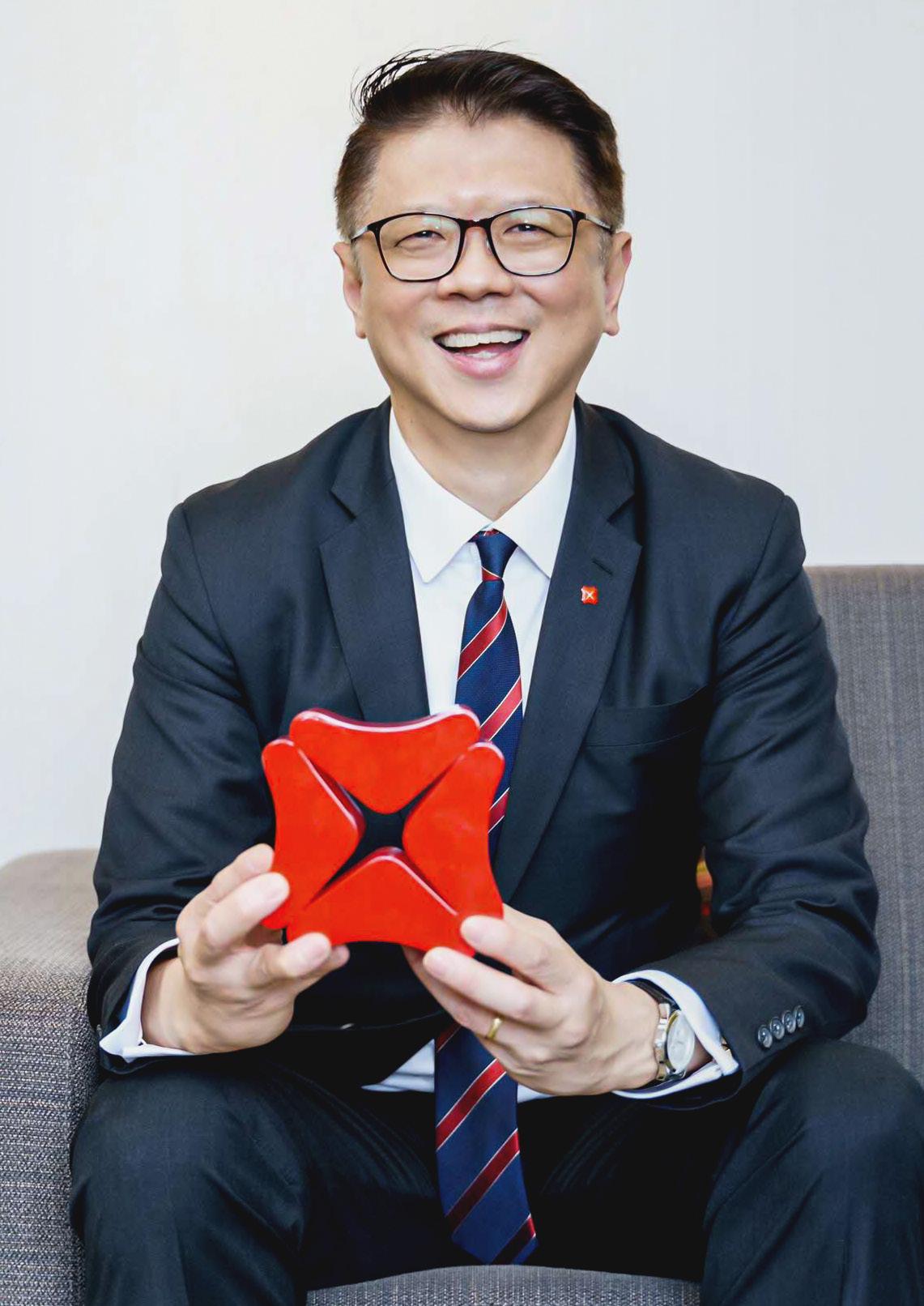

Few banks globally can match the recent credentials of Singapore’s DBS Bank. Since 2018, the financial institution has been named Best Bank in the World 2022 (Global Finance), World’s Best Bank 2021 (Euromoney), and Global bank of the Year 2018 (The Banker) – seven times in just five years.
DBS was not just the first in Singapore but the first bank in Asia to receive such global recognition.
Founded in 1968, DBS now has more than 36,000 employees, a presence in 19 markets globally, and recently enjoyed its most profitable quarter, with net profits jumping a forecast-beating 48% to a new record high
of SG$2.69 billion (US$1.99 billion). This came off the back of a breakout year (2022) for the bank, which delivered a record net profit of SG$8.19 billion.
An early adopter of technology, DBS has also picked up numerous digital banking awards and now considers itself as a tech company offering financial services.
As they say, ‘a different kind of world calls for a different kind of bank’.
Driving that change and digital transformation is Lim
Him Chuan, Head of Group Strategy, Transformation, Analytics and Research, where he works closely with the Group CEO Piyush Gupta and the Group Management Committee.
Him Chuan most recently served as CEO of DBS Bank Taiwan, overseeing a successful period where it was named Best International Foreign Bank in Taiwan by Asiamoney.
In his new role, which he took up in April, the 22-year DBS banking veteran is now driving strategy and planning; and on top of this, his team has a mandate around transformation, data science and ecosystem partnerships. This includes end-to-end accountability, championing change and transformation and enabling excellence to achieve sustainable outcomes
Culture transformation
DBS has been on a transformation journey for more than a decade – transforming not only into a digital bank but changing the culture of the entire organisation.
While many companies swear by the oft-quoted management adage that ‘culture eats strategy’, DBS has stretched that notion in an ethos they call ‘culture by design.’

Culture does not happen by accident, it needs to be carefully shaped and nurtured

“I believe that one cannot be a leader unless you have willing followers, so my leadership style is anchored around how to create a sense of HOPE for my people: a higher sense of purpose (H); ownership of people and business, from end-to-end (O); peopleoriented with empathy (P); and everything fun (E).
My five years spent as CEO of DBS in Taiwan sharpened my leadership style with greater empathy along with what I like to call the five Ls: Listen better with intent and an open mind; Learn and unlearn, with humility; Link the dots together to create purpose and a sense of urgency; Leverage resources with influence and moral authority; and Laugh – as a sense of humour is always important when the going gets tough.”
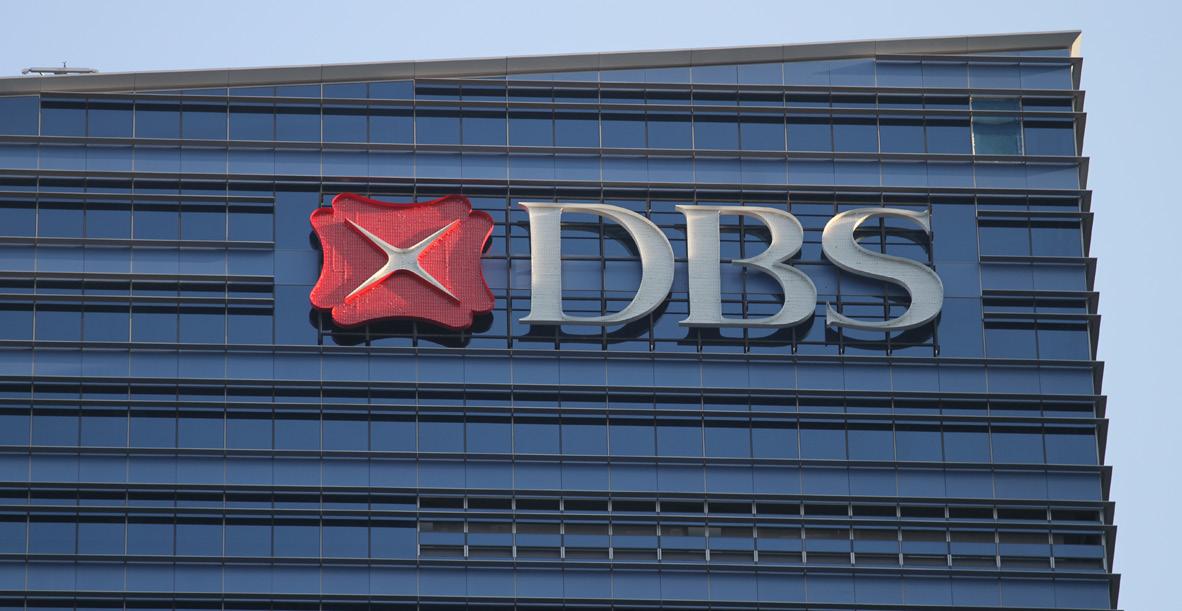
“What that means is having a very clear vision of the culture we want in the bank, then running programmes of change to shift mindsets and nudge behaviour towards that vision,” Him Chuan tells Business Chief
Culture does not happen by accident, it needs to be carefully shaped and nurtured, he says.
“When we embarked on our digital transformation in 2014, we wanted to change the way we worked such that we became more nimble, more agile, more innovative – in other words, more like a startup, and less like a traditional bank.
“Our aim is to build a dynamic culture that embraces innovation, while future-proofing employees by equipping our
people with digital skill-sets.”
To deliver customer service with a DBS touch and a unique brand of Asian service, the bank came up with its ‘RED’ ethos, which stands for Respectful, Easy to deal with, and Dependable.
“Our aim for RED was to have something that every employee at every level could understand and remember effortlessly, which in turn makes it easier to implement initiatives that bring this customer service ethos to life.
“Under RED, we created cross-functional teams called PIEs (process improvement events) to take the waste out of operating processes and improve customer service. We initially set out to achieve 10 million customer hours saved through PIEs, but eventually achieved about 250 million customer hours saved annually. We have since evolved this into ‘customer journey thinking’, which entails having a deep understanding of the end-to-end experience of various customer interactions with DBS and relentlessly eliminating pain points.”
With more than two decades of banking experience across Asia, Him Chuan has certainly seen the landscape change
– from the rise of Asia-focused banks as they capitalised on regional business growth, to rapid digitalisation driven in part by the rise of fintechs, to sustainability becoming top of mind.
“We are mindful of a world emerging from the throes of Covid-19 that calls for a different kind of bank – one that is more technology and sustainabilityfocused,” says Him Chuan. “These are areas we know DBS can step up to the plate.”
“In recent years, sustainability has become a key theme for banks, and it has become increasingly important for the industry to work with clients to transition to net zero.”
Already, DBS has taken significant strides in sustainability, embedding
environmental and social considerations into the fabric of the business.
In its Responsible Banking pillar, DBS seeks to empower its clients to be more sustainable; and in its latest sustainability report – Our Path to Net Zero: Supporting Asia’s Transition to a Low Carbon Economy – details the selection of science-informed decarbonisation pathways and further sets interim 2030 targets for a large number of sectors.
“As of today, this is one of the most comprehensive and ambitious sets of decarbonisation targets among banks globally,” he declares.
As of today, [we have] one of the most comprehensive and ambitious sets of decarbonisation targets among banks globally
The Global FinTech Awards 2024 will be celebrating the very best in Fintech with the following categories:
Digital Banking Award
–PayTech Award
–
Digital Currency Award
–
FinTech Award
–InsurTech Award
–
Sustainable FinTech
–
FinTech Technology Award

–
FinTech Consultancy Award
–
Future Leader Award
–
Executive of the Year Award
–
Project of the Year Award
–
Lifetime Achievement Award




The appetite for B Corp certification is growing across Asia, as companies doing good look to differentiate from those that just talk a good game
In tough economic times, it is easy to ignore ‘nice-to-haves’ in business. As companies look to cut back on everything from hybrid work to perks, you could be forgiven for thinking that ESG concerns would be one of the first casualties of hard times. Not so across large swathes of Asia, where the appetite for being B Corp –a business driven by doing good rather than prioritising profits – is growing.
“The growth of the B Corp community in Asia is on the rise, driven by a collective vision of an inclusive, equitable, and regenerative economy. The movement’s recent acceleration
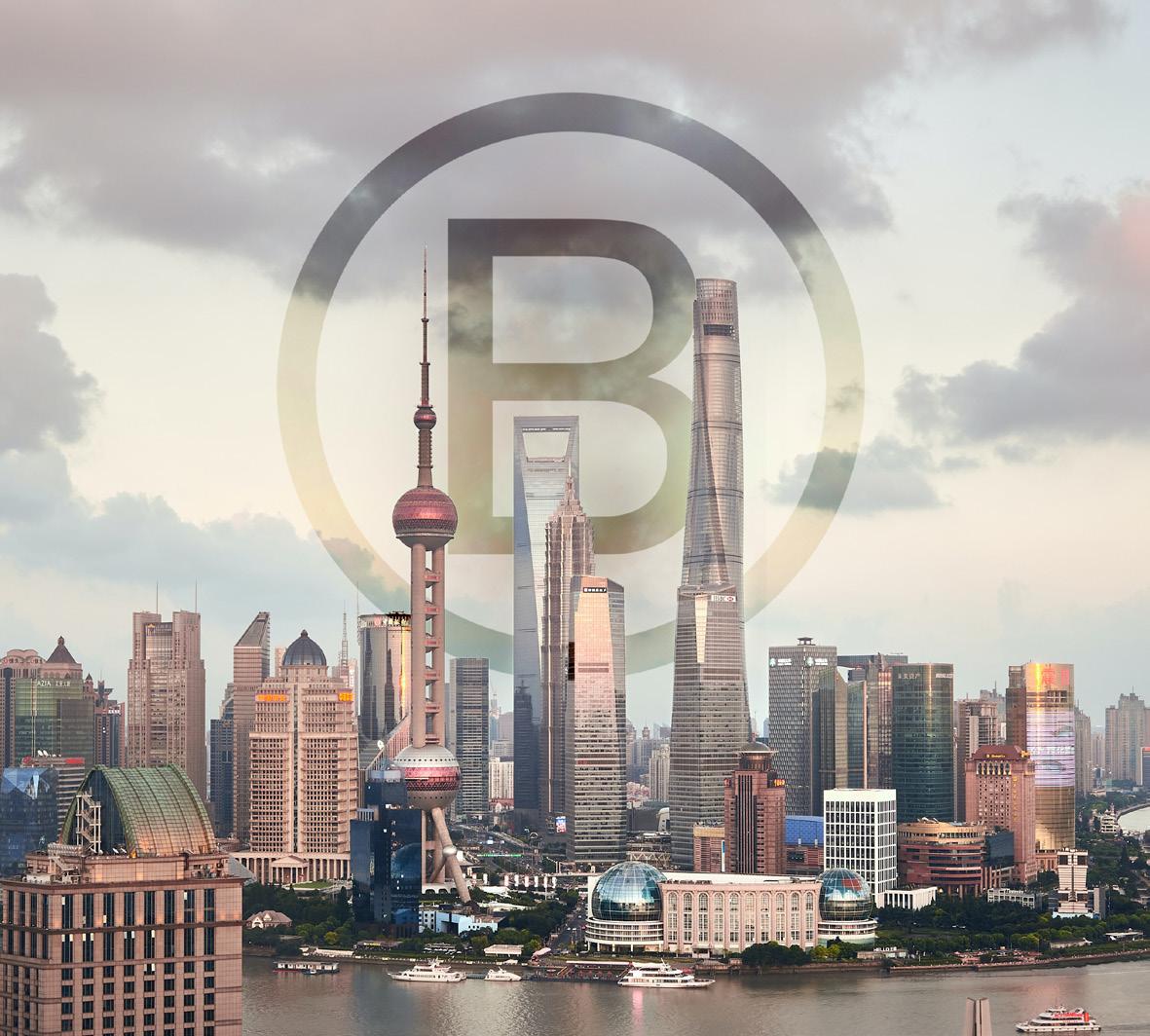
is evident, with over 245 B Corps in the region,” Eleanor Allen, Lead Executive of B LabGlobal, tells Business Chief
Founded in 2006, non-profit network B Lab believes that all businesses can use a stakeholder-driven model to be better, to be B Corporations. B Lab oversees the certification of companies that meet high social and environmental standards. The overall aim is to create a global economy that instead of lining the pockets of the few instead benefits everyone.
It is a lofty ambition, but more than 7,200 companies have been certified in 93 countries, and Asia – with its growing economic power –could be the next big opportunity. Especially when you consider there are currently just 245 B Corps in Asia.
“B Lab is evolving its standards and digital platform, collaborating with the Centre for Impact Investing and Practices (CIIP) to align with regional markets and drive the adoption of our standards across Asia,” adds Allen.
The B Corp movement saw its fastest growth in 2022, fuelled in part by increased ESG regulation and pressures from stakeholders and investors. With trillions of dollars being diverted to funds that prioritise ESG investments, and more being pledged, being good is also good for business.

According to Forbes, 58% of companies in APAC say ESG is critical to their long-term success, but only 29% have developed KPIs for ESG performance.This is where B Lab can help, with tools to help measure and manage company impact.
Adoption in Asia is growing, with a few notable hotspots showing rapid recent acceleration.
Take Singapore, which had just two B Corps in 2015, 24 in 2022, and 33 at last count. In Hong Kong & Macau, there are now 25 – up from just one single B Corp in 2016.
“B Lab is committed to supporting and fueling ongoing growth in Asia,” says Allen. “We believe this is just the beginning.”
There is also a perception that being B Corp is only possible for small businesses with a low footprint. This is a misconception. While many B Corps are indeed small and medium-sized ventures, large organisations can also make the grade.
In Asia, four B Corps are publicly listed. These include O-Bank from Taiwan, certified in 2017 and the first digital native bank in Taiwan. Then there is SIGMAXYZ Holdings from Japan, a digital transformation consultancy certified in 2022. This year, real estate
The growth of the B Corp community in Asia is on the rise, driven by a collective vision of an inclusive, equitable, and regenerative economy
Eleanor Allen Lead Executive, B Lab Global
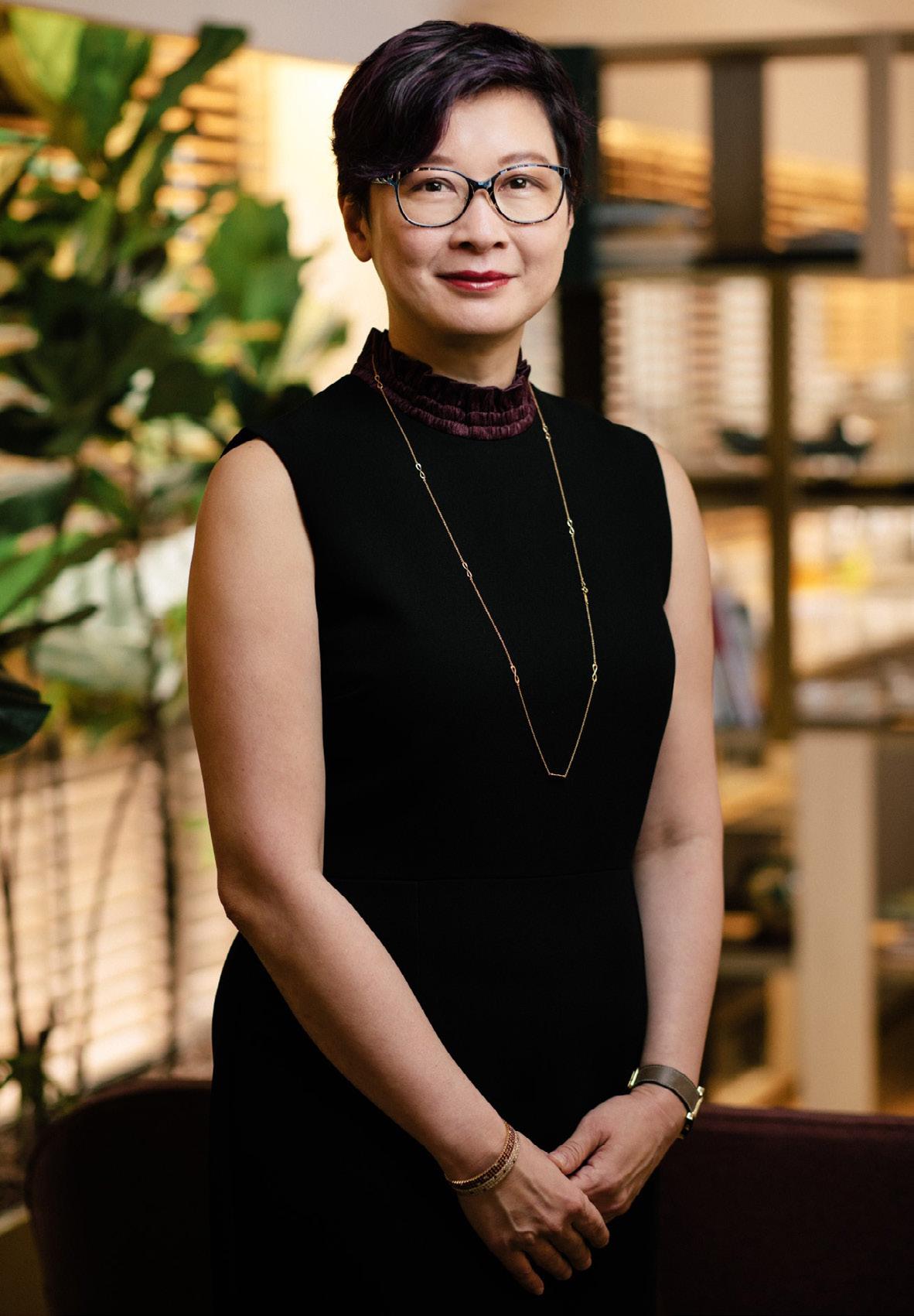
developer Olive Tree Estates from Singapore joined the list, as well as Malaysia’s personal care products retailer InNature Berhad.
The franchisee for The Body Shop (which itself became B Corp in 2019) in Malaysia, Vietnam and Cambodia, InNature Berhad’s MD Datin Mina Cheah said: “Our belief that business can be a force for good is embodied in every aspect of our business and operations.”
You only have to look at the numbers to realise that while Asia holds incredible potential, it is lagging when it comes to B Corp awareness and uptake.
According to the International Monetary Fund, Asia and the Pacific will deliver 67%
of global economic growth in 2023, as many economies struggle with inflation and supply issues. Three of the world’s top five countries ranked by GDP are also in Asia (China, Japan, and India).
With such monetary muscle, imagine how the world of B Corp would look with Asian companies accounting more than for the lowly 3% they currently claim.
That is one reason why B Lab Global teamed up with Singapore’s Centre for Impact Investing and Practices (CIIP) to establish the B Lab & CIIP Centre of Excellence for Asia.
CIIP was established and supported by global investment company Temasek Trust, and has strategic partnerships with ABC Impact, a private equity fund dedicated to impact investing in Asia. This is important to bring investor perspectives and sensibilities to the table.
Dawn Chan is the CEO at CIIP and she believes B Corp resonates with Asian culture and society.
“Many businesses in Asia have a history of active involvement in their community,” says Chan. “Culturally, many Asian investors and companies are motivated to practice a version of impact, even though they may not be conversant with the vocabulary of impact practice.
Chan believes that Asia offers a unique opportunity to deliver impact at scale – from empowering hundreds of millions of small to medium-sized enterprises, and smallholder farmers in the region, to developing a roadmap for a just climate transition.
Dawn Chan CEO, Centre for Impact Investing and Practices (CIIP)“These positive dynamics, together with the region’s underlying cultural values, create conditions highly conducive for driving impact in Asia,” she adds. “We are actively engaging B Lab Global to offer more customised products and
We are actively engaging B Lab Global to offer more customised products and services for the Asian context, and to cater to Asian languages
services for the Asian context, and to cater to Asian languages.”
There has been a positive reception to the new Singapore centre, and Chan hopes it will kick-start a broader B Corp movement in the region, by spreading the word and sharing success stories.
Stories like Education for Good – Hong Kong’s first B Corp. Founded in 2012, EFG is the only social enterprise dedicated to social entrepreneurship education and incubation in Hong Kong.
EFG’s principal consultant Gilbert Lee says survival is the main challenge for small businesses operating in an environment like Hong Kong.
“As a B Corp, we need to pay extra effort to fulfil the B Corp recertification and obligations,” says Lee. “The benefits are seeing EFG’s mission and corporate values become more solid with the entire team and with the board of directors, not to mention clear positioning with clients. Even though they may be familiar with B Corp, they recognise and appreciate our corporate values once they are explained.”
Lee is also co-chair of B Lab Hong Kong & Macau – a thriving chapter in the region tasked with promoting awareness, assisting companies with their certification journeys, and building that B Corp community by nurturing advocates.
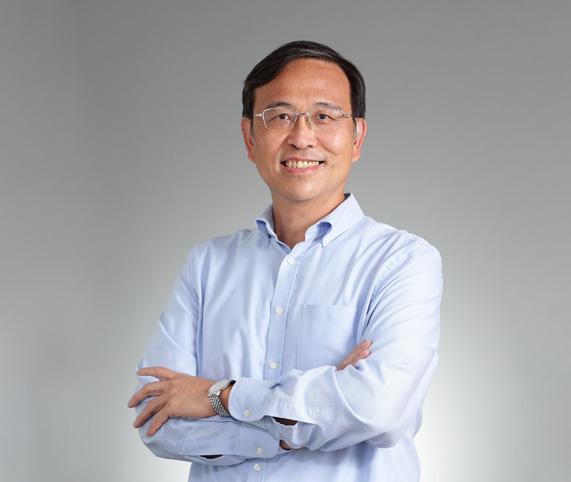
Lee admits B Corp was slow to get off the ground in Hong Kong, partly due to the complexity of the process and the time investment required.
There is also the need to create a bespoke solution for companies in Asia that takes into consideration regional priorities, language, and culture. Despite these hurdles, B Corp is still gaining traction.
Hong Kong has long been considered a pioneer and rolemodel in capitalism, especially in financial markets. However, capitalism needs a major revamp to tackle the pressing global challenges
“It took four-and-a-half years to have the first 10 B Corps in Hong Kong and just two years for the next 10,” says Lee. “We now have 25 Certified B Corps in Hong Kong and we aspire to have 100 by the end of 2026.
“Hong Kong has long been considered a pioneer and role-model in capitalism, especially in financial markets. However, capitalism needs a major revamp to tackle the pressing global challenges. We believe the B Corp movement is a relevant framework for systemic change and helps make capitalism more equitable, more inclusive and more regenerative for us and our future generations.”
B Lab Global’s Allen understands the need to simplify the processes, addressing Lee’s point to evolve and adapt the certification process for an Asian audience.

“We are currently evolving our standards to meet the challenges of today and tomorrow,” says Field.
“In catalysing a broader movement of using business as a force for good, CIIP will collaborate with the B Lab Global Standards Management team to ensure that the standards are relevant to Asian markets.
“Additionally, we are improving our digital platform and certification processes so it will be easier for companies to engage with the new standards.
“The economy across Asia is a significant contributor to the global economy – it is shaping the next phase of globalisation. At B Lab, we want to use this momentum to further catalyse the B Corp movement of business as a force for good.”

Digital reporting hasn’t gained traction in Australia, but the burning platform is the impact of ESG reporting, says Deloitte Australia’s Managing Partner Joanne
 Gorton
WRITTEN BY: KATE BIRCH
Gorton
WRITTEN BY: KATE BIRCH


When it comes to digital reporting, Australia has long been a laggard.
Unlike the rest of the world, Australia doesn’t mandate digital reporting – one of just two developed countries without a digital reporting regime.

And while companies can do so voluntarily, the process just hasn’t gained traction.
“Companies here have had the ability to report in a digital way to regulator ASIC for more than a decade, but no company has chosen to do so,” Joanne Gorton, Managing Partner of Audit and Assurance at Deloitte Australia tells Business Chief
But that could all be about to change.
With the new climate and sustainability standards set to be adopted from 2024, companies will need to add ESG disclosures to their portfolio of reporting requirements – the impact of which could be the “burning platform”, declares Joanne.

The Treasury has proposed mandatory climate-related reporting for the country’s largest companies and financial institutions starting 1 July 2024. Once implemented, Australia will join 35 nations and regions worldwide – including New Zealand – in the roll-out of mandatory climate disclosures.
“The new ESG reporting requirements are the biggest reporting change Australian companies have had to deal with – larger even than the transition to International Accounting Standards back in 2005,” shares Joanne.
And as the demand for more information grows, so too does the need for that information to be standardised, consistent, accurate and comparable.




If we had a digital corporate reporting regime, we would be on par with our major economic trading partners like the US, UK, Europe and Japan
Joanne Gorton
Managing Partner of Audit & Assurance | DeloitteJoanne
This significant increase in reporting requirements could be the push needed for Australian companies to embrace and prioritise digital reporting.
While Joanne and her team at Deloitte are pushing for structural reform in making digital reporting mandatory, something that would bring the country in line with the world’s advanced economies, the Treasury has a different view, however.
“In their most recent Climate reporting consultation paper, the Treasury noted that they would not mandate digital reporting for climate disclosures ahead of financial reporting,” she explains.
Currently, annual reports and financial statements are provided to regulators such as ASIC (Australian Securities & Investments Commission) and the
ASX (Australian Stock Exchange) in a PDF document which is not able to be read and easily analysed by technology.
Not only are companies spending hundreds of hours in preparing and lodging financial reports, but the process gives rise to error, with Deloitte research finding there were more than 8,000 documents re-lodged with the ASX since 2019 due to mistakes made.
By embracing digital reporting (in short, presenting information in a machinereadable way) companies not only reduce errors, enhance productivity, and improve efficiency, but crucially increase transparency – ensuring reliable information is in the public domain.
Corporate digital reporting plays a huge role in making this happen, “making it easier for international investors to read and analyse their financial information and making them more likely to invest in
Australian businesses have a oncein-a-lifetime opportunity not only to facilitate interest from overseas investors, but also to make meaningful change that will help society as a whole
Gorton Managing Partner of Audit & Assurance | DeloitteMeet Joanne Gorton As Managing Partner of Audit & Assurance
and a member of the National Executive, Joanne leads the A&A Deloitte Australia business made up of more than 2,300 people. She has more than 25 years of multi-industry experience as an auditor working with high-profile ASX100 clients and large public companies. A trusted advisor at Board and C-level, Joanne’s career has spanned Australia’s two largest professional services firms, Deloitte and PwC. Passionate about client service, diversity and inclusion, and people development, Joanne is Executive Sponsor of Deloitte Australia’s Neurodiversity network.
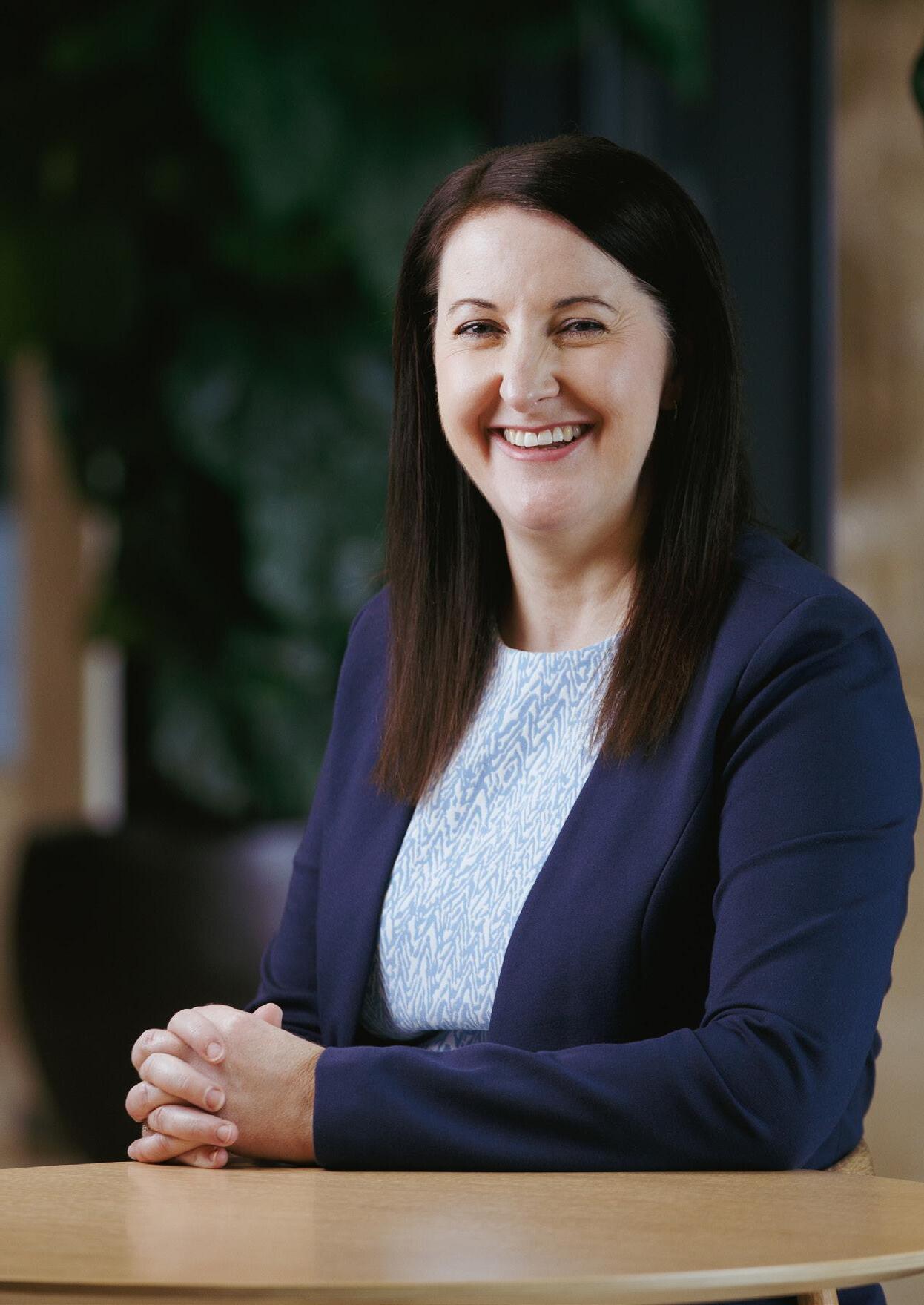
Australian businesses”, explains Joanne.
Backing this up, a 2019 inquiry into the regulation of auditing in Australia noted that the roll-out of digital financial reporting has the capacity to assist not only auditing, but the efficient and transparent functioning of financial markets more broadly.


Machine-readable financial statements can be easily and accurately analysed not only by audit firms but other interested third parties including regulators, academics and investors – a shift that could build trust and deliver better social and environmental outcomes, and crucially drive investment.
$7.7 bn
Predicted annual net GDP gain from 2030 with the introduction of mandatory digital financial reporting –a $40 billion total gain over 20 years
According to Joanne, increasing visibility of their companies on the world stage is the biggest opportunity Australian companies have in the shift to digital reporting.
“We are a small country, and we need to attract our fair share of the foreign investment from international capital markets into the Australian economy.”
Joanne points out that Australia, like many other countries, needs to make the transition from reliance on fossil fuels to renewables and with this, there are huge implications for the country and economy.
“Therefore, the more we can do to make Australia an attractive destination for foreign capital, the stronger our economy will be.”
New modelling from Deloitte Access Economics (DAE) shows mandatory digital financial reporting for all large Australian businesses would grow the economy by up to $7.7 billion annually and support more than 14,000 jobs from 2030.
The biggest barrier is the willingness of Australian companies to embrace and prioritise digital reporting, largely due to time and costs.
While year one brings extra time and costs in setting up systems to tag the information and report it in a digital way, from year two onwards the benefits outweigh the costs, says Joanne.
Then there is AI, which could well be the catalyst for change. With companies around the world scrambling to take advantage of advancements in AI and the automation benefits it can bring, now could be the perfect time to shift to digital reporting voluntarily to get a jump start on your competition.
While Joanne is excited by the possibilities of AI, she believes only a mandatory shift to standardised reporting methods and metrics would allow for meaningful comparison between Australian companies.

Following the release in June 2023 of a consultation paper titled Climaterelated financial disclosure, the Australian government is looking to enforce mandatory climate-related reporting obligations for the country’s largest companies and financial institutions starting 1 July 2024. When implemented, this would require companies to “make disclosures regarding governance, strategy, risk management, targets and metrics, including greenhouse gases”, the consultation paper states. Among specific proposals, companies are required to disclose transition plans, including information on offsets, target-setting and mitigation strategies, as well as processes used to monitor and manage climate-related risks and opportunities. The rules would also require reporting of Scope 1 and 2 and material Scope 3.
Thankfully, those companies are waking up to the productivity and competitive advantages a shift to digital reporting would bring.
The impending ESG reporting requirements should therefore be seen as an opportunity to make the switch to digital reporting across the board.
“If we had a digital corporate reporting regime, we would be on par with our major economic trading partners like the US, UK, Europe and Japan,” says Joanne.
“Australian businesses have a once-ina-lifetime opportunity not only to facilitate interest from overseas investors, but also to make meaningful change that will help society as a whole.”




There need not be disparity between small-to-medium enterprises (SMEs) and the multinational companies (MNCs) that seemingly tower above them in the race to sustainability. In fact, businesses are linked more than they realise, which is why the world is entering a more collaborative state whereby businesses become partners and goals are unified. This is particularly so in the case of supplier and customer interactions as relationships between parties are critical in helping them build resilience and reduce their overall impact in line with all Scope emissions.
There are two factors to this. Firstly, there’s the understanding of the necessity and the opportunities presented to businesses when they take climate change on board as a key component of business. And several elements are to be considered here by businesses as a part of their business strategy:
• Regulatory: with increasing constraints & incentives for businesses to decarbonize coming to enforce the “Net-Zero World” such as the CSRD from the EU.
• Resilience: with Climate change in any case underway, ensuring healthier but also more robust business practices that mitigate associated risks.
• Competitiveness: Being in tune to existing and emerging customer demands regarding one’s own carbon footprint and commitment.
 Sorouch Kheradmand Global Head of Sustainability Schneider Electric
Sorouch Kheradmand Global Head of Sustainability Schneider Electric
The second is the move from plans to tangible, measurable and replicable actions and, these days, technology is at the heart of achieving new outcomes with lasting impacts.
This is where partnerships can really help accelerate the transition to more sustainable systems and reconcile business and sustainability, creating wealth and growth, while actively contributing to the protection of our common heritage and the planet. Thanks to Schneider Electric and its approach to its business ecosystem, there are myriad SMEs across the globe developing their knowledge and activities to mitigate climate change.

“It’s about turning it beyond building that market awareness; beyond that education to actually go after tangible, measurable, replicable claims”
SOROUCH KHERADMAND GLOBAL HEAD OF SUSTAINABILITY FOR BUSINESS ECOSYSTEM, SCHNEIDER ELECTRIC
Enabling these kinds of actions to take place is not simply done by chance. Sorouch Kheradmand, tells us how the multinational energy management and digital automation businesses positively impacts supplier and customer perception to bring them on board with a sustainable way of thinking.
Having worked his way up the chain from an engineering position to his influential role at Schneider, Kheradmand is able to work closely with partners. This is not only to share its insights into climate change but also to deliver the tools to allow large companies and SMEs alike to deliver on their own targets while simultaneously
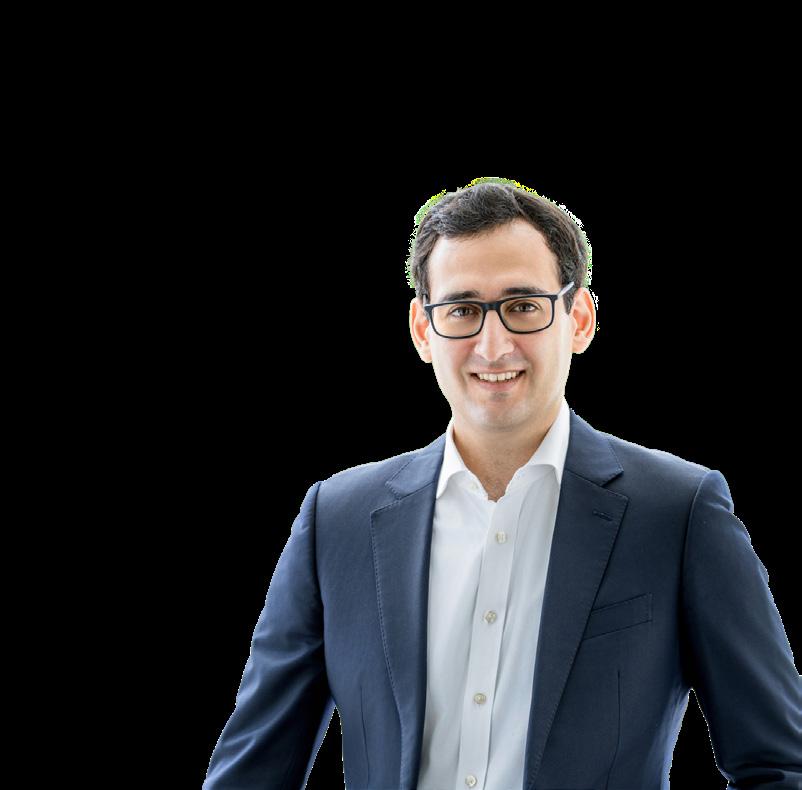

COMPANY: SCHNEIDER ELECTRIC LOCATION: SINGAPORE
Sorouch is a senior executive for Schneider Electric where he manages Sustainability globally. Sorouch had various experiences, starting his career in R&D, before leading large strategic projects (M&As/divestures) and later on large commercial teams. Passionate about Sustainability, he made it his career and tries to show ways businesses can harness it to grow and outdo their competition, while having a positive impact on People, Planet & Society. On top of his current job, he often writes, talks and exchanges
meeting demands of their own suppliers and customers. Initially sceptic about how business could answer profitably to the climate crisis, Kheradmand is now focused on delivering his advocacy to a worldwide network of businesses to drive a significant impact, at scale.
“Schneider is very active in decarbonising its operations, and I said ‘what can we take from that and actually apply to our ecosystem of suppliers, partners and customers?’” says Kheradmand. “We reached out to our customers, we listened to them, we saw that there is a willingness to do something. But we needed to make sure people understood what was in it for them and how they could walk the talk.”

“The beauty of Schneider Electric is that we have so many solutions for the active management of building infrastructure and data centres”
SOROUCH KHERADMAND GLOBAL HEAD OF SUSTAINABILITY FOR BUSINESS ECOSYSTEM, SCHNEIDER ELECTRIC
to be
and made tangible What quickly came to light was the need to make sustainability tangible-ie, how can you measure your impact on the climate when you can’t directly visualise it?

The word ‘tangible’ marks the first stage of Schneider Electric’s strategy, which is completed by realising impact and understanding how to benchmark sustainability using data on environmental, social, and governance (ESG) metrics. This is where Kheradmand really tapped into his desire to educate—one that was formed during his career journey. He recognised that businesses must first understand their impacts in simple terms; facts, figures and
data that is objective to the organisation. “This means marrying the science of sustainability—and to start carbon—and the art of business, which basically refers to how you gain customers and improve your market footprint, margins, costs, and increase prices,” says Kheradmand.
“We tried this with our customers. We went to them, sat with them and figured out plenty of solutions already exist. It’s a science and you need to be very specific and particular about what you want to deliver. It needs to be tangible, measurable and reproducible.”
This first stage influenced the founding of the Schneider Electric Sustainability School. This free initiative helps train stakeholders
in carbon measurement, management, and further processes to ensure that their businesses can be sustainable long term.

The programme helps businesses to first gain knowledge of their impacts and the opportunities available to them. The second step to be launched in October 2023 covers decarbonisation strategy, enabling organisations to achieve their goals using digital tools to monitor their carbon footprints. Thirdly, Schneider is dedicated to teaching SMEs how they can reap the commercial benefits, such as lower costs, better efficiencies, and the ability to market their environmental impacts as a key differentiator, doing so in a way that is true to the science sustainability.
Dealing with this step is a matter of mindset. As Kheradmand explains “Sustainability today is kind of like digital was 20 years ago”, in a sense that transformation was seen as a ‘must’ without really understanding the business dynamics nor the position to measure the impacts of technologies over time. The same process is happening with businesses and their sustainability impacts, which is why it’s important to understand the current situation and actions that can be taken with stable effects economically. This is where Schneider Electric sustainability approach is framed around three axes: Strategise (by measuring your footprint to build an achievable ambition), Digitise (by measuring and tracking progress regularly), Decarbonise (by taking the steps to make one’s business less carbon intensive and more sustainable).
Having avoided aimlessly making changes to become more sustainable, it’s time for
businesses to begin measuring and taking actions that are in line with their operating model and have measurable Return on Investments (ROI). Technology is a key component of this step and Schneider delivers a solution it calls Zeigo Activate.
Supporting SMEs in the strategy process, Zeigo Activate looks at how business can align with decarbonisation, which can only be achieved methodically. This solution enables greater insight into operational functions, the effects that each potential improvement actions would have on the environment and bottom line, and sheds light on the things that businesses can manageably change to begin reducing carbon emissions in a step by step approach to ultimately reach the ambition they have set.
Zeigo Activate is destined to digitise this whole thought process to plan, act and track. It is usable regardless of your own Sustainability expertise and is designed to streamline the user’s action plan to become more efficient down to execution, by leveraging an open marketplace of service providers that can support you to carry any changes, such as switching out legacy technologies for more up-to-date ones or even adopting entirely new systems for renewable energy or power management.
Leveraging this tool will enable SMEs and beyond to assess and eliminate their emissions in Scope 1 and 2, and Schneider is working to deliver Scope 3 reduction capabilities, which will likely require integration with inter-organisational data.
“Simply by comparing business KPIs and adding Sustainability KPIs in the mix, you

start building a framework that is much better for decision making, because you see the possibilities. One solution may have a great impact on the climate, but a terrible impact on your business and its profitability,” says Kheradmand.

“However, you may find a few more actions that have a similar impact on your footprint, but a much better, even profitable, business-friendly, business impact, ideally even a competitive advantage.”
The idea explained by Kheradmand is to look for and focus first on sustainability ‘wins’ that are economically beneficial for the business—ultimately suggesting there could be a number of actions to take that present low or no impact commercially. At the end of the day, the aim is to limit impact rather than advocate for it.
“I started testing this view with my customer category. Of course, we quickly found a few issues they wanted to address; we had quite a few successful campaigns
with them and tangible examples to draw from onwards,” says Kheradmand.
“The beauty of Schneider Electric is that we have so many solutions for the active management of building infrastructure, data centres, “active” being basically what we call technologies impacting the way an asset behaves during its operational lifetime.”
What Kheradmand’s metaphor represents is the strategy taken to cement some sustainable processes that are easily implemented while being embedded into the business, before focusing on much

larger programmes to tackle ever-evolving problems. His view is that maximising such actions at a large scale is where the focus should be first to fight climate change while continuing to create wealth and prepare for the next wave of investments.
Building trust allows Schneider Electric to really make an impact on its ecosystem in a positive way with the aim to create a ripple effect whereby SMEs communicate with their suppliers and customers about their achievements and strategic planning and this creates a virtuous and self-

“Simply by comparing Business & Sustainability
KPIs together by initiative, you start building a framework that is much better for decision making”
SOROUCH KHERADMAND GLOBAL HEAD OF SUSTAINABILITY FOR BUSINESS ECOSYSTEM, SCHNEIDER ELECTRIC

“Schneider is very active in decarbonising its operations, and I said ‘what can we take from that and actually apply it?’”
SOROUCH KHERADMAND GLOBAL HEAD OF SUSTAINABILITY FOR BUSINESS ECOSYSTEM, SCHNEIDER ELECTRIC
maintained momentum towards large scale decarbonation across the industry.
“A strategy always starts from the market, and therefore customers. When you look at a strategy, it’s about understanding where you are today—where your market is today— where your current and potential new markets will be in the next five years, and also where you want to go in those five years, picking the right fights” says Kheradmand.
Referring back to the need for data, it’s clear from this conversation that it’s the starting point for most actions taken in the name of emissions reduction. Moving forward, Schneider’s initiatives will seek to recognise sustainability as an imperative and share tips for management and

process implementation. To recognise these impacts, the company set up the Sustainability Impact Awards, which acknowledges the high achievers within its partner, supplier and customers networks.
“We launched the Sustainability School— Chapter 1—in April earlier this year. The same year as for the Impact Awards, the first session of which was held eight months ago,” says Kheradmand.
“Now, it’s about turning it beyond building that market awareness; beyond that education to actually go after tangible, measurable, replicable actions and claims. This means giving the tools and the means to our partners and customers in the market to act on their footprint.”
To summarise these points, Schneider Electric is committed to partner support as it recognises both the demand for Scope 3 emissions reduction, but also the barriers that its ecosystem faces in meeting mere Scope 1 and 2 requirements. By bringing sustainability to the forefront of the business, naturally it will enable and incentivise its ecosystem to follow with more impact rippling down the supply chain.
This impact will be achieved through a “toolbox”, a variety of easy to access digital tools, among which Zeigo Activate, the Sustainability School and much more, to enable companies in making emissions reduction more achievable and profitable. To recognise this process for both its challenges and its success, the Sustainability Impact Awards rewards great achievements seen by partners and customers that are willing to take positive action, with more programs underway to push this momentum forward.
The Global Sustainability Awards 2024 will be celebrating the very best in Sustainability & ESG with the following categories:

Sustainability Strategy Award
–
ESG Program Award
–
Climate Change Award
–
Diversity & Inclusion Award
–Net Zero Award
–
Sustainable Supply Chain Award

–
Sustainable Technology Award
–
Sustainable Consultancy Award
–
Future Leader Award
–
Executive of the Year Award
–
Project of the Year Award
–
Lifetime Achievement Award


Siva Kolisetti and Anthony Stevens
their
There is no escaping generative AI. It seems not a day goes by in the business world without another landmark iteration, playbook launch, or attentiongrabbing concerns over the very existence of humanity.
Artificial Intelligence is nothing new, of course, but the launch of ChatGPT in November 2022 was a tipping point similar to the dawn of the internet and launch of the iPhone.
The good news is that the Asia & ANZ region is well positioned to take full advantage of the AI opportunity. That’s according to the latest Global AI Index – a deep analysis of 62 countries that has been producing annual reports for four years.

Those countries are ranked according to investment, innovation and implementation, and while the US is a runaway leader with a score of 100, China is in second place (62) and Singapore third (50).
Singapore is the big mover, placing tenth in 2020 and now beating the UK into third spot. South Korea (40) is also moving in the right
direction, from 8th in 2020 to sixth in 2023. Of other countries in the region, Japan scores 30, India 31, Australia 31, and Taiwan 25. For context, the UK scores 42 and the UAE 24.
This looks like positive news for the region as governments invest in AI and infrastructure, but what does it mean for your business? And what are the rules and regulations that you need to be aware of?

There has been a surge in AI adoption in the region, according to a report by Dataiku. It says Southeast Asian firms are expected to increase spending on AI by 67% this year compared to 2022. The report also says AI platforms will be the fastest-growing software category up to 2026, with spending on AI solutions in Southeast Asia growing by almost 300% to hit US$646 million in 2026.
Companies are clearly clamouring for a slice of the generative AI pie, investing heavily in technology that they likely do not fully understand, and this could open up numerous risks.
Anthony Stevens is a former Partner and Chief Digital Officer at KPMG and published author of ChasingDigital:APlaybookforthe New Economy. As the founder and CEO of 6clicks – an AI-powered risk and compliance platform headquartered in Australia – Stevens is well placed to provide insights on how best to maximise rewards and minimise risks when adopting Generative AI.
“Generative AI for business presents two primary risks. One is from the source material, and the other is in terms of the finished product,” says Stevens.
“Because generative AI produces content based on the input it uses or receives, organisations must ensure that they are not
Siva has more than 25 years of experience, with 15 in the US and 10+ from India working at Fortune 500 companies. Prior to RightData, he worked at UBS, The Coca-Cola Company, Nike, Target, and Omega Healthcare where he served as the bridge between technology and the business to deliver objectives.
 Anthony Stevens
CEO and co-founder, 6clicks
Anthony Stevens
CEO and co-founder, 6clicks

Anthony is a former Partner and Chief Digital Officer at KPMG. He also wrote the Chasing Digital: A Playbook for the New Economy. Before KPMG, he held senior executive roles for publicly listed and private businesses and was the founder and non-executive director of several highgrowth technology startups.

GEN AI – THE STATS ACCORDING TO GOLDMAN SACHS
18% Percentage of work globally that could be automated by AI

300 million
Number of jobs that could be lost to generative AI
7%
The percentage by which the annual global GDP could increase
breaking copyright laws or restrictions through improper or unauthorised use of material that is owned and protected by others. Similarly, businesses need to ensure that their own protected or proprietary content is not exposed through the use of generative AI.”
Stevens highlights rumours about company secrets, source code and confidential data that have been unintentionally released publicly through generative AI, and the importance of monitoring output.
“Using generative AI without supervision is risky and, possibly, reckless,” he says. “Organisations will want to establish review processes that not only serve as a check and balance for created content, but also will continually assess the accuracy of the material. Very high degrees of accuracy consistent over periods of time may allow for higher levels of trust and less stringent review.”
While there is rightly caution required when it comes to embracing generative AI, the implications for not welcoming the technology with open arms could be even worse for the business.
That’s the view of Siva Kolisetti, Head of Technology, Operations and Compliance at RightData, who has more than 25 years of experience working with global firms including UBS, The Coca-Cola Company, Nike, Target, and Omega Healthcare.
“Generative AI has implications on various aspects of the business, with short term wins building into long term wins,” says Kolisetti. “Considerations of Generative AI should be founded on establishing strong data governance practices, addressing ethical considerations, fostering technical expertise, ensuring robust infrastructure, and engaging in continuous monitoring and improvement.
“Navigating these factors will allow the businesses to harness the power of Generative AI – driving innovation, enhancing customer experiences, and gaining a competitive edge in today’s evolving business landscape.”
For business leaders, that competitive edge is a double-edged sword. You have to innovate and take risks – or risk being left behind. That is what is driving governments
Generative AI offers upside to a near limitless number of industries and applications. The caveat is that it must be used responsibly, and it must be managed
Pan-Asia / ANZ regions are wellpositioned to benefit from generative AI due to growing labour shortages, escalating demands, increased complexity and the need to further compete in global markets
 Anthony Stevens CEO and co-founder, 6clicks
Anthony Stevens CEO and co-founder, 6clicks
to invest right now, and what is also facing the organisation – but the benefits are clear.
“The benefits can be significant in terms of lower costs, faster turnaround times and even finished products that are more accurate, representative and focused than those from traditional means of developing content,” says Stevens.
“Generative AI offers upside to a near limitless number of industries and applications. In particular, those that face the sheer volume and drudgery of tasks that could be automated are ones that could see the greatest transformation. The caveat is that Generative AI must be used responsibly, and it must be managed.”
Perhaps one of the biggest challenges leaders face when looking to adopt AI is, ironically, a human one. People are naturally concerned about their jobs, and the wider implications for their lives, as talk of machines replacing humans in various roles takes an icy grip.
Convincing employees to embrace AI could, then, be seen as them signing their own redundancy papers, especially if their job involves some of those mundane tasks that Stevens alludes to.

According to Goldman Sachs, 18% of work globally could be automated by AI, and 300 million full-time jobs could be lost to generative AI. The upside to those startling stats is that annual global gross domestic product could increase by 7%.
And although fewer jobs in emerging markets are exposed to automation than developed markets, Goldman Sachs says more than 10% of jobs in India and nearly a fifth in the Philippines could be lost to AI.
Despite this, Kolisetti is upbeat on Generative AI’s long-term impact, saying that integrating the tech in the near term will challenge human roles that are based on repetitive activities, process orientation, quick data insights and are rules driven.
“Embracing AI starts with education of AI and what it means to the business and its employees,” says Kolisetti. “A winning culture towards such innovation is one of continuous learning and upskilling, creating value-added roles and moving its workforce to manage those functions. It will always be a journey of humans and technology complimenting each other.”


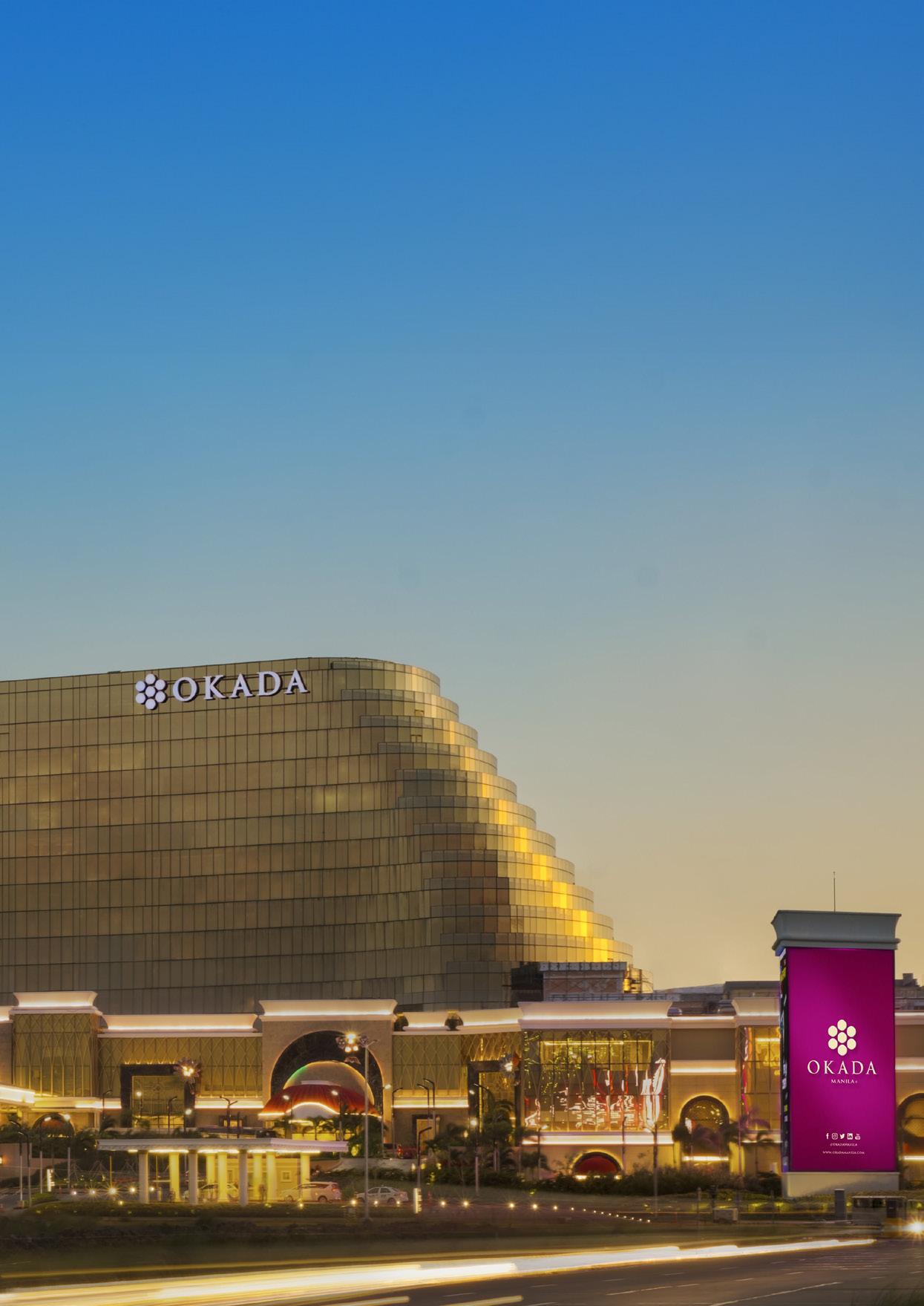 WRITTEN BY: TOM CHAPMAN
PRODUCED BY: STUART IRVING
WRITTEN BY: TOM CHAPMAN
PRODUCED BY: STUART IRVING
Since opening in 2016, Okada Manila has quickly established a reputation as a premier entertainment resort – and not just in the Philippines, but on the world stage.
Such was the scale of this US$2.4 billion development that more than 18,000 workers were employed during the first phase of construction alone, and the results were spectacular.
As its location in the Entertainment City district of Manila suggests, Okada Manila and its people are in the business of providing unforgettable experiences for their guests.
In addition to the dazzling casino and luxurious hotel, this vast, integrated resort boasts an endless array of world-class amenities, meaning there truly is something for everyone whether they are looking to shop, dine or relax.

One major hotspot is The Fountain, a US$30 million attraction designed by the same team responsible for similarly iconic water features in Las Vegas and Dubai.
Then there’s Cove Manila, Southeast Asia’s biggest indoor beach club and nightclub, capable of hosting up to 3,000 partygoers.
“What Okada aims to do is provide entertainment that’s safe, fun and has that wow factor,” explains Ashley Lorraway, the organisation’s Director of Security Infrastructure, Research and Development.


Safety and security data isn’t just important, it is critical, and each organisation has unique needs when it comes to storing, managing, and retaining these assets. Dell Technologies offers modern, scalable, and flexible storage solutions that meet evolving demands while reducing risk and cost of ownership.

Safeguarding security data is mission-critical and demands a robust storage strategy. Maintaining continuous access to recorded videos and seamless operation of recording and archiving equipment is crucial. Storage solutions must provide continuity while addressing other end-user concerns like compliance, cybersecurity, and AI. After all, a storage strategy is not “robust” if it doesn’t implore a holistic and multi-faceted approach.
In environments like airports and casinos, operations must persist during storage maintenance to remain compliant. Adopting a node-based NAS storage solution, with erasure coding, can enable non-disruptive maintenance. Cybersecurity breaches are another contributor to downtime. Storage architecture must include an offline cyber recovery vault, disconnected from the production cluster, to expedite recovery and minimise downtime.
Mounting network access and egress costs combined with security concerns have many companies rethinking the cloud first approach. Organisations are shifting to a cloud-smart strategy by segregating on-prem and cloud-stored data to harness
cloud benefits while maintaining data control. Storage solutions that scale-out seamlessly into the petabyte range while minimising rack space are the best choice to drive efficiency and performance on-prem.
As companies aggressively adopt Generative AI, optimised storage infrastructure is the key to harnessing improved outcomes. Storage platforms must align with the emerging needs of GenAI and offer solutions that make the data easier to manage, process and analyse. Catering to AI’s specific requirements and vast, diverse data sets is accomplished by employing cutting-edge technologies like distributed storage, data compression and efficient data indexing.
The world’s most flexible1, efficient2 , and secure3 scale-out NAS solution
When it comes to deploying a robust storage architecture that effectively stores, protects and manages mission-critical security data and offers unmatched performance for workloads like AI, Dell PowerScale storage is the clear choice. With critical assets at stake, you need a high-performance and scalable solution to help protect what matters most.

Learn more at:
www.Dell.com/PowerScale
1 Based on internal analysis of publicly available information sources, February 2023. [ ↑ ] 2 Based on Dell analysis comparing efficiency-related features: data reduction, storage capacity, data protection, hardware, space, lifecycle management efficiency, and ENERGY STAR certified configurations, June 2023. [ ↑ ] 3 Based on Dell analysis comparing cyber-security software capabilities offered for Dell PowerScale vs. competitive products, September 2022. [ ↑ ]
“We throw absolutely everything at providing an extraordinary experience; that’s the number one thing Okada tries to achieve and we succeed every time.”
Okada Manila has certainly lived up to the hype that existed during the planning and construction phase, receiving Five-Star accreditation from the Forbes Travel Guide and becoming a true icon of the Philippines.

“Integrated resorts can be a dime a dozen; if you walk into one, you’ve walked into them all,” adds Lorraway. “But Okada Manila is not like any other place you’ve walked into. There’s no other resort that has the same feel, the same aura or the same
TITLE: DIRECTOR OF SECURITY INFRASTRUCTURE, RESEARCH AND DEVELOPMENT
COMPANY: OKADA MANILA LOCATION: PHILIPPINES
Ashley Lorraway, the vigilant guardian of Okada Manila’s security and surveillance technology platforms, is a seasoned IT professional with 20 years of experience managing projects for corporate, government and mining sectors, and over a decade-long specialisation in intricate security and surveillance systems such as CCTV, access control and facial recognition.
Hired as the Senior Manager of Surveillance Technical Services for Okada Manila in 2016, he has since been promoted to Director of Technology and then promoted again in 2022 to be named the Director of Security Infrastructure, Research & Development, and is a serving member of the Security Executive Committee.
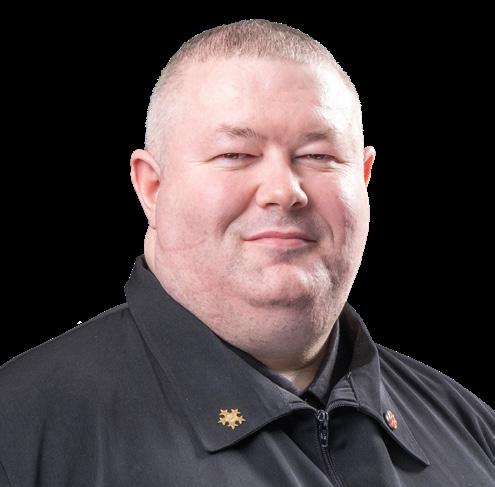
Hanwha Vision offers a comprehensive line of security and video surveillance solutions which include IP cameras that support up to 8K resolution, a video management system, video and audio analytics, multi-sensor technologies and device integration with a host of 3rd party application providers.


The company’s intelligent surveillance solutions are used globally, securing people, property and data across a range of industries including retail, transportation, education, banking, healthcare, hospitality, airports and more.
Contact us
atmosphere. You can find all the usual avenues of entertainment that you get in most integrated resorts, but there is just something extra special at Okada Manila. People will say that I’m biased but it’s absolutely true.”
While he is keen to sing the praises of Okada Manila’s entertainment pedigree, Lorraway’s day-to-day concern – as his job title suggests – is how best to protect the resort from security threats.

As a seasoned technology expert, he heads up all the technological infrastructure for the security and surveillance platforms – supported by two data centres and around 200 server rooms – while training up the next generation of talented technicians and engineers.
Lorraway is also in charge of Okada’s barring and exclusion committee, whose prerogative it is to prohibit a small but potentially dangerous minority of visitors from entering the casino and wider resort.
Countless colleagues within the industry will be able to relate to the kinds of obstacles being faced by Lorraway and his team on a daily basis. Traditional challenges like budgeting are up there with the toughest, but luck has often been on their side.
“When you’re dealing with a board of directors, 9.9 times out of 10 they’re not technically sound,” says Lorraway. “You have to convince these businesspeople that a certain technology is going to improve
operations so they will give you the money to do just that.
“I’m extremely lucky, though, that part of Okada’s mission is to be an innovative global leader. I’m also lucky that we have one of the best CTOs on the planet and a Chief Security Officer who is very technologically-minded and supportive.”
Undoubtedly, however, the biggest ongoing challenge for the Okada Manila tech team is prioritisation.


The artificial intelligence (AI) explosion and the way emerging technologies are being applied to video analytics and facial recognition means there is seemingly a limitless number of pathways when it comes to innovation, research and development. The big question is which path to choose.
Lorraway continues: “There are only so many hours in a day and the question we have to ask ourselves is, ‘which mind-
blowing technology advancement are we going to implement first?’. It sounds arrogant, but we have so many ideas and we’re working on so many projects.”
Okada Manila: Constantly evolving Okada Manila has, as Lorraway puts it, been very good at “rolling with the punches” during its short history.
Evidently, the pandemic was a significant trigger, forcing the business to evolve with















the launch of an online casino, while also considering practical measures at the resort itself such as the installation of contactless technology. So far, the online casino has proved a roaring success and an excellent revenue stream which looks set to continue growing.
Another major evolution has involved the use of facial recognition which, a few decades ago, was being examined but was something of a pipedream given the necessary AI algorithms were not yet powerful enough. But now, the technology has reached the point where it has the potential to replace pretty much any authentication that exists within a casino environment, such as ID passes and reward cards, and can even be used to record player ratings.
“We have dramatically expanded our use of facial recognition, to the point where we are testing with a view to using it in other areas beyond security,” Lorraway adds.
Introducing new technology to combat fire risk is another example of Okada Manila refusing to rest on its laurels. Fire is the single biggest threat to a venue of this size, regardless of the industry, and

DID YOU KNOW...
• Okada Manila’s casino features the country’s most expansive gaming floor, with around 500 tables and more than 3,000 electronic machines
• The Fountain at Okada Manila cost US$30m and was designed by WET, the same company behind similarly iconic water features in Las Vegas and Dubai
• Altogether, the planning, design and development project to turn Okada Manila from an idea into reality took nine years
• Cove Manila, Southeast Asia’s biggest indoor beach club and nightclub, is enclosed in a glass dome which is 100 metres in diameter and 30m in height
• The club is capable of hosting up to 3,000 partygoers
“With AI, what would usually take weeks now takes a matter of seconds”

it is essential to have the best alarm and suppression systems installed.
The tech director continues: “We’re innovative here; we’re always looking for new ways to protect life, especially when you’re such a big site and you can’t monitor every little area.
“We’ve evolved when it comes to tackling fire, right from the notification and alarms to state-of-the-art suppression systems.”

The aforementioned boost that AI has given to facial recognition and similar processes cannot be celebrated enough by Lorraway.
“AI is everything,” he proclaims. “All of the greatest leaps forward that anybody makes in the next decade or two are going to be AI-relevant.”
In the security and surveillance technology space, in conjunction with gaming protection, use of video analytics powered by AI is the direction in which Okada Manila is already heading.
“Say you’ve got a 12-man cheating syndicate which is meeting up on site,” Lorraway adds, providing a hypothetical example. “Traditionally, surveillance people would look at their activities over a
“All of the greatest leaps forward that anybody makes in the next decade or two are going to be AI-relevant”
ASHLEY LORRAWAY DIRECTOR OF SECURITY INFRASTRUCTURE, RESEARCH AND DEVELOPMENT, OKADA MANILA
Turn any camera into an active security system with no additional infrastructure Get instant alerts and track watchlisted individuals in real-time with advanced face and body recognition.

Proudly Partnering with Sync4U Oosto’s Local System Integrator

I WANT A DEMO
Looking for unparalleled video surveillance?
Since 1996, Intelligent Security Systems leads with SecurOS® Video Intelligence, operating globally with native analytics, customized solutions, and hardware-software complexes. Elevate your security today!
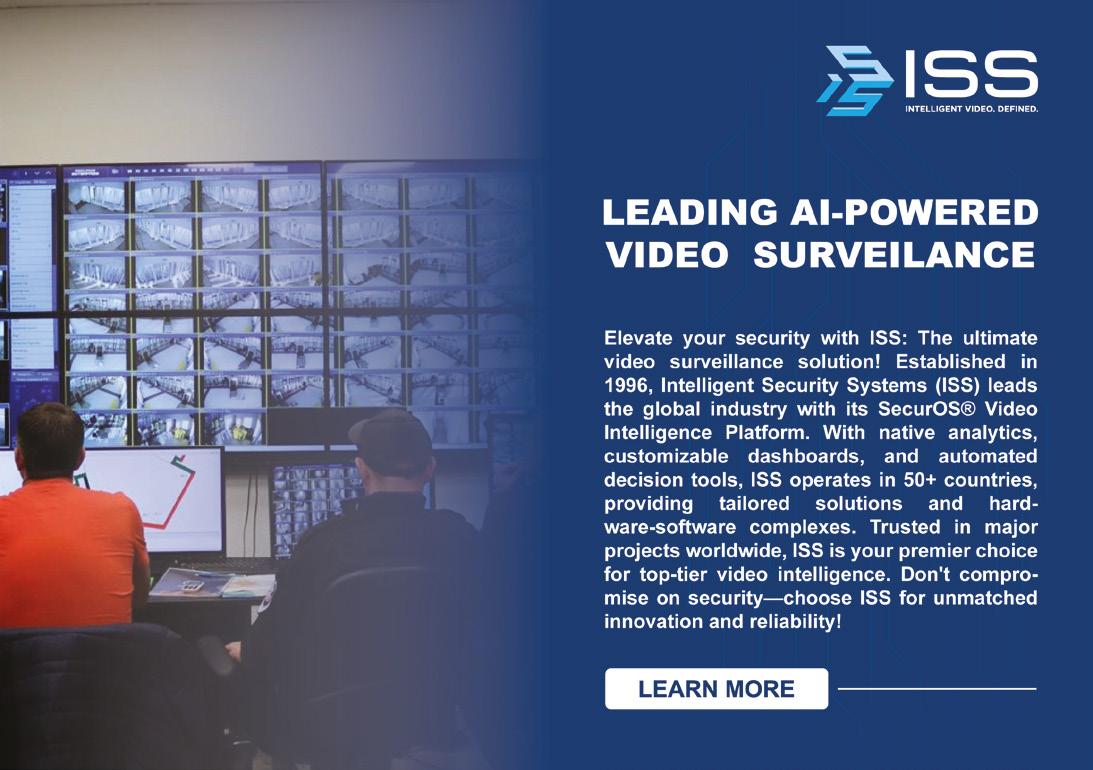
period of time and try to denote all the members of that syndicate.
“With AI, what would usually take weeks now takes a matter of seconds, depending on the processing power. We can tell the AI that we’ve already confirmed one of the members and we want to know everybody he’s had contact with.”
Then there’s behavioural recognition and the prospect of teaching AI tools how to recognise the type of behaviour seen among those who are cheating or looking to steal, including pickpockets.
“Casinos are rife with pickpockets,” Lorraway goes on. “So, we’re in the midst of teaching the AI to recognise them

ASHLEY LORRAWAY DIRECTOR OF SECURITY INFRASTRUCTURE, RESEARCH AND DEVELOPMENT, OKADA MANILA
“Vendors used to be very siloed but, these days, you need versatile partners that can cover a multitude of areas”

before they’ve even picked a single pocket. “It’s the kind of stuff where, if I told you 25 years ago, you wouldn’t even believe it. But we’re working on it, we’re proving it and we’re implementing it.”
Okada Manila is already benefitting from facial recognition when it comes to detecting banned patrons on its premises. Whether they are a prolific criminal, terrorism suspect or a responsible gaming risk, relevant individuals who are spotted by the facial recognition system will trigger an alert before security personnel escort them away.

However, like in all innovative technology departments, the team is constantly asking how they can go one step further; in this case, how can they reduce the time it takes for a banned patron to be recognised and security personnel dispatched?
The answer is facial recognition sunglasses which, granted, sounds a bit James Bond when you first hear it, but the technology is available.
Lorraway explains: “Security personnel will wear the sunglasses attached to the facial recognition system and get an immediate alert when a wanted person approaches. Banned patrons won’t even get in the building.
“It sounds like pie in the sky stuff, but we’ve already done it. We’ve tested the prototype, it works and we’re going to implement it – end of story. That’s another incredible thing in the pipeline.”
Licence plate recognition, vehicle IED scanning and privacy screening, which sees innocent parties automatically blurred out when incident footage is exported and viewed for legal purposes, are just some of the other processes being made substantially easier by AI and analytics.



The importance of vendor management Clearly, Okada Manila’s tech team and the wider business cannot go it entirely alone and frequently enlist the help of a trusted selection of key partners.

“Vendor management is one of the most important aspects of a technology professional’s job,” Lorraway says. “When there’s a force majeure event like the pandemic, you want to have the kind of relationship where there’s flexibility and you can work together to create a winning scenario.
“Vendors used to be very siloed but, these days, you need versatile partners that can cover a multitude of areas.”
One example Lorraway gives is Sync4U, a local provider of facial recognition capabilities, as well as a host of other innovative technology for fire protection and security purposes.
Another partner, Andaman Sea and Earth, offers some of the best video analytics and management systems on the market.
“Having the kind of relationship where your partner is well connected, and can help you find the right people for a specific purpose, is exactly what you want.”

If any country is ready for a business aviation boom, it is India. So what is holding back a market perfectly suited to private jets?
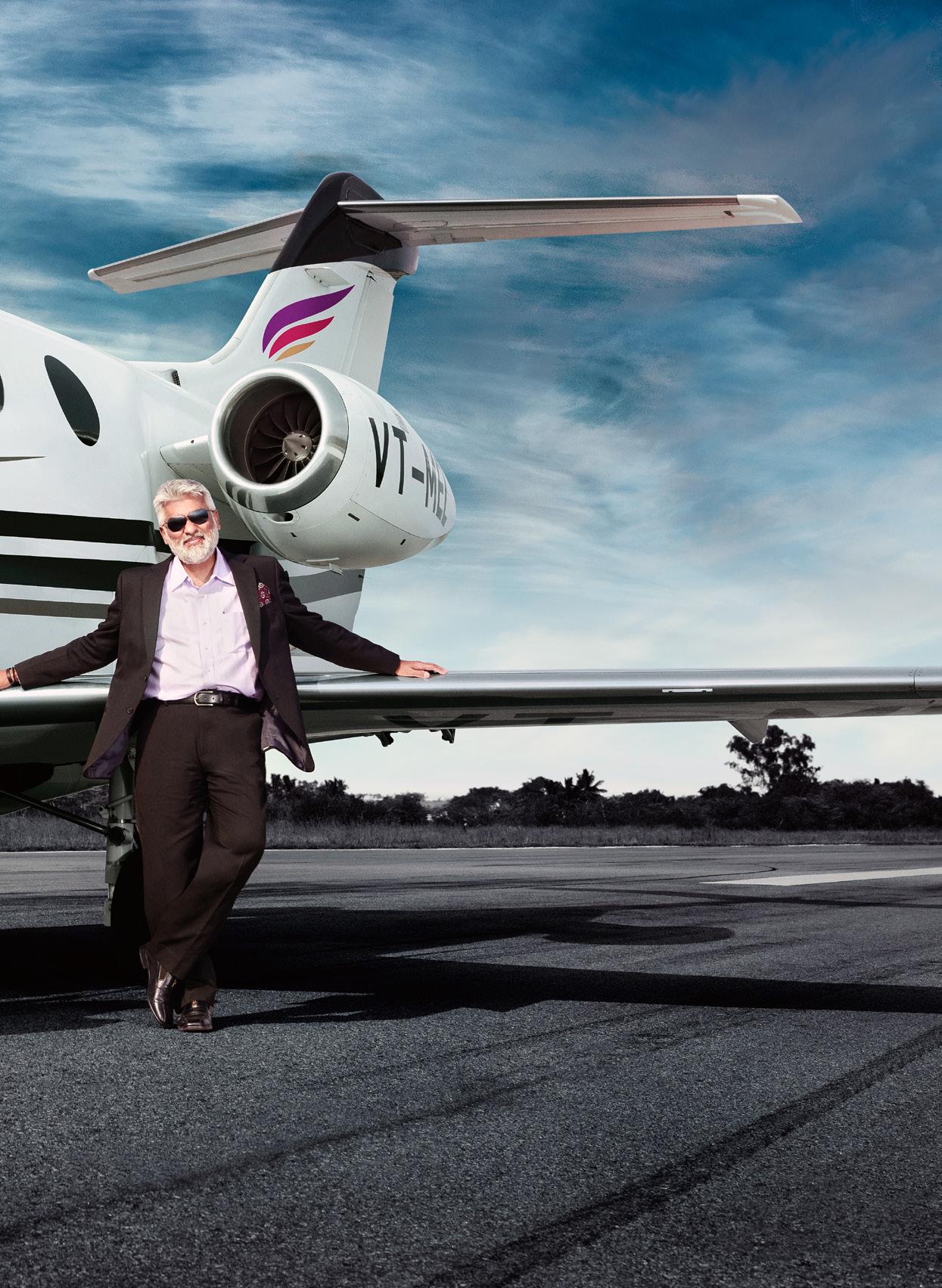 WRITTEN BY: KATE BIRCH
WRITTEN BY: KATE BIRCH
ndia’s successful space mission to the south pole of the moon showed the nation’s ambition and technological prowess. Yet look closer to home and India is a country crying out for the benefits of flying via business jets.
India is one of the world’s fastest growing large economies (recently posting GDP growth of 7.8%), is a vast nation (the world’s seventh largest), and has a diverse landscape that is slow to navigate due to ageing, overburdened transport infrastructure.
Demand is there for business leaders looking to make multiple meetings in as little time as possible – and business aviation carries that promise. By flying from smaller airports at times that suit you, and arriving closer to your destination, a private jet can be a personal time machine – clawing back valuable hours that would otherwise be spent in transit or waiting for your next commercial connection.
The facts speak for themselves. While business jet demand in the US –the world’s largest market by far – fell by 4% year-on year in August 2023, it grew by 7% in India. Not only that, but according to data from aviation specialists WINGX, India is the top performing market in Asia and has recorded a staggering triple digit growth versus 2019 (the pre-pandemic benchmark).
Armed with those statistics, you would think that India is a magnet for private jet operators, but you would be wrong. The country is lagging when it comes to
adopting and accommodating business jets. But that may be set to change.
Part of the problem is government regulation. In the global market, NetJets is the biggest player in private jets. Backed by Warren Buffet’s Berkshire Hathaway, the company has just announced a US$5 billion investment in 250 more aircraft to add to its fleet. But here’s the problem – NetJets’ business model is based on

fractional ownership, where you pay to own a share in the aircraft. That model is not currently allowed in India.

Circumnavigating that issue is aviation disruptor John Kuruvilla, CEO and co-founder of IndiaJets.
“While fractional ownership globally is a well-established sector, in India the same is yet to be approved by the government,” says Kuruvilla speaking exclusively
to Business Chief. “We know that the government is working on it and legislation could be passed shortly.
“The IndiaJets model is a first of its kind Fractional Membership model, tailor-made for our market. We believe that Fractional Ownership, when approved, and Fractional Membership will co-exist in India to straddle the needs of both the large companies as well as the MSME sector.”
John Kuruvilla, CEO and co-founder of IndiaJets, joined startup Air Deccan – India’s first lowcost airline – in 2003. At the time, he described it as a David vs Goliath situation, with Air Deccan taking on Jet Airways, Sahara Airline, and flag-carrier Air India.
“A bunch of mavericks came together and disrupted every aspect of the commercial aviation space in India, to make Air Deccan the second largest airline in India within three years of launch,” he recalls. “From single configuration aircraft,
to route planning, pricing, a web-first distribution model, to technology, to marketing –we rewrote the rules of the game.”
Back in 2003, Indian air passenger traffic was just 19 million. By 2023, it was 270 million – making it the fastest-growing aviation market in the world.
As COO of Deccan Charters in 2008, Kuruvilla got his first taste of business aviation and was excited by the demand. But the timing could not have been worse, against the backdrop of the global financial crisis.
“IndiaJets was registered in 2009 but stayed in cold storage,” he says.
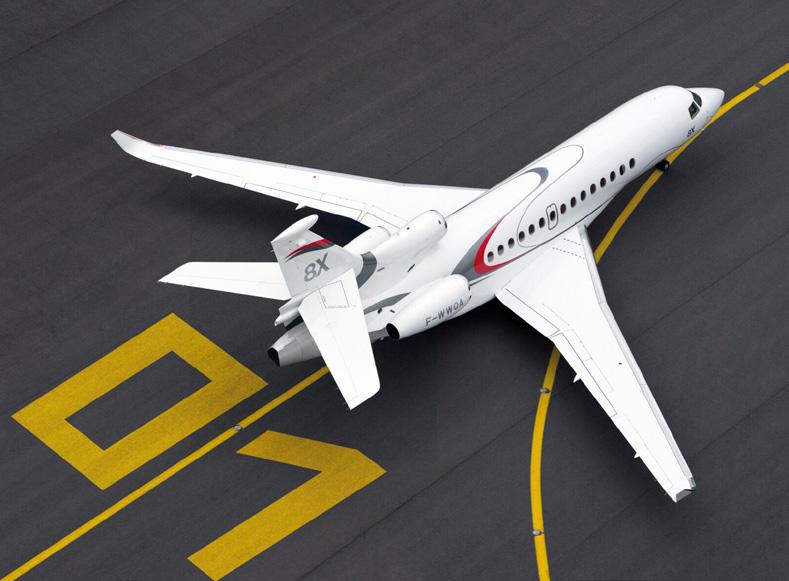
Over the next 14 years, Kuruvilla met regularly with his friend Rajesh Rajan – a retired pilot from the Coast Guard, who was head of planning at Air Deccan –and discussed what they could do in the aviation space in India.
After Air Deccan, Rajan built a successful career in the business aviation sector. Then in 2022 “through discussions over long motorcycle rides together and with another common friend, we took the plunge.
“The timing was right, COVID had seen a surge in business aviation, India was the fastestgrowing economy, and business leaders in India who understood the value of time over money realised the amount of time they were wasting on commercial flights.”
IndiaJets was officially launched in May 2023.

Regulation is one of three factors Kuruvilla believes is holding business aviation back in India. The second is business jet financing. Globally, this is one of the key growth drivers for the industry but is very much in its infancy in India. Then there is the mindset.
“Indian business leaders are financially very prudent and look at private jets as an extravagant indulgence,” he says. “But over the past few months we have been able to demonstrate the fact that it could be an important productivity enhancement vehicle to save valuable time. In addition, our
business model does not require investing millions of dollars to access aircraft.”
To illustrate the benefits of flying private, Kuruvilla cites the example of the MD of a multi-million dollar company who flew IndiaJets from Bangalore to Chennai.
“From the time he left his house in Bangalore to taking off from HAL airport which is within the city to reaching Mount Road in Chennai it took him around 90 minutes flying IndiaJets,” he says. “Airport gate entry in Bangalore to airport gate exit in Chennai took 60 minutes.
One of the richest women in India is Kanika Tekriwal, CEO and founder of plane aggregator startup JetSetGo. JetSetGo operates, manages and flies chartered planes and aircraft. Tekriwal founded the company in 2012 when she was just 22 years old – and a year after beating cancer.

 IndiaJets
Kanika Tekriwal
IndiaJets
Kanika Tekriwal
“The last time he flew commercial it took him 45 minutes to reach the Bangalore International airport from his residence and had to waste 60 minutes checking in early – not to mention the long queues at every step and the crowds.”

If you believe that time is money, then flying in this way makes sense for senior executives.
With around 3,500 business jets in the US, 970 in Mexico, 490 in Germany, and
300 in Venezuela, the 149 business jets in India clearly do not match the potential.
“With a shift in consumer mindset, coupled with government efforts for the sector’s growth including investing in private jet terminals – I believe the market is ready for exponential growth,” says Kuruvilla.
“This will further be helped by OEMs then looking at India seriously and investing in authorised service centres and spare parts warehousing.”
Operating private jets is not a simple activity, and there is significant infrastructure required, and buy-in not just from potential flyers but also the Indian government and aircraft manufacturers. If that all happens, Kuruvilla believes the market will accelerate, and fast.
The good news is, it is already happening. In December 2022, Cochin International Airport Limited (CIAL) opened what it says is the largest private jet terminal in the country – and the fourth in India with a dedicated business jet terminal alongside Delhi, Mumbai, and Ahmedabad.
CIAL promises ‘flight door to car door in two minutes’. It is this kind of marketing that could drive uptake and interest, and more operators will also inevitably bring prices down.
“With a population of 13,300 UHNIs and around 700,000 millionaires – plus India being the fastest growing economy in the world –we believe there is a potential for the number of jets in India to double over the next few years,” says Kuruvilla.
All of the stars seem aligned. India’s business aviation sector is surely ready for takeoff.

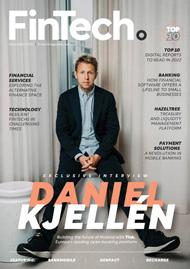



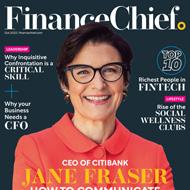



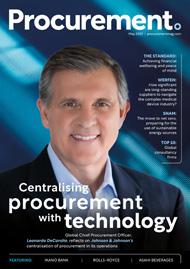




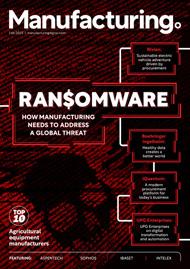
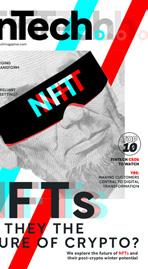






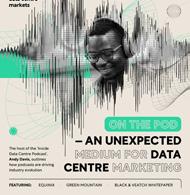
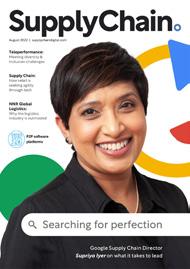

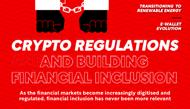






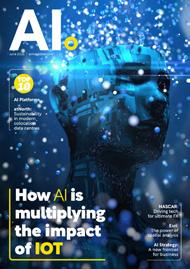












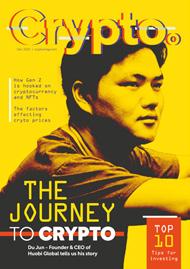
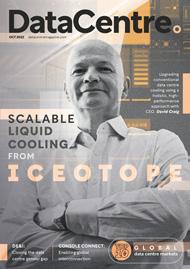
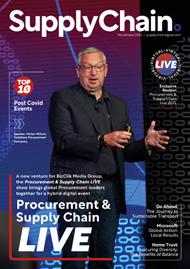

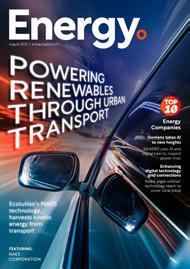

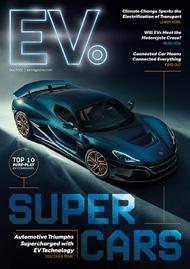


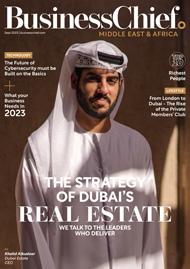



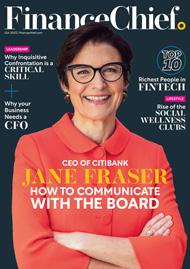


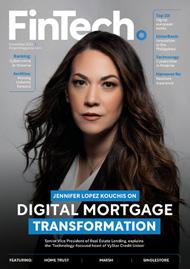

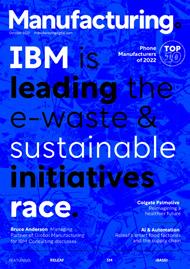


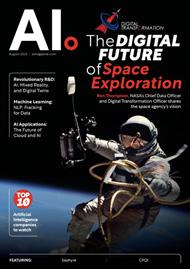








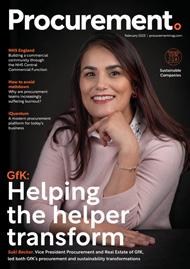

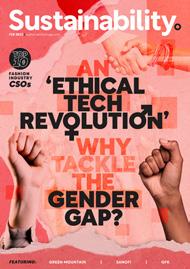





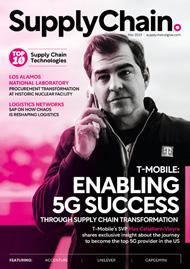



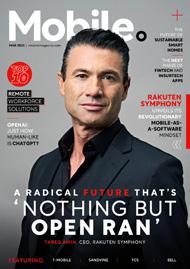


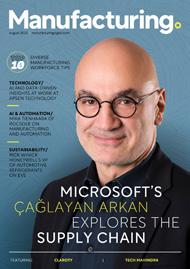




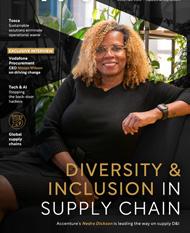


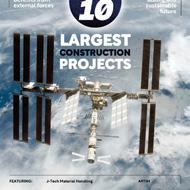


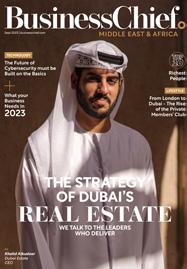








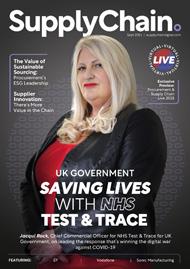






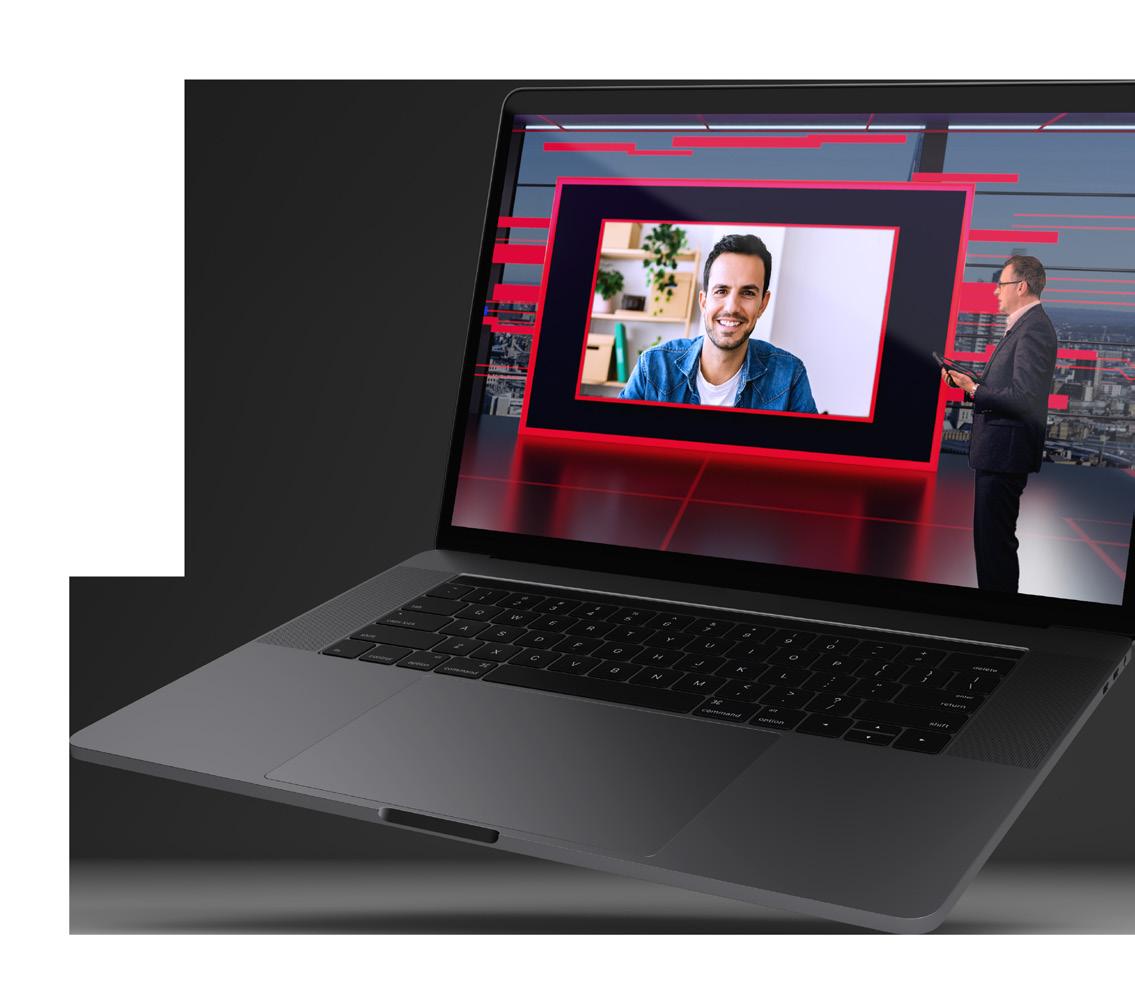

11 - 12 October 2023
1,000+ Virtual Attendees
2 Day Learning and Networking Event
30+ Acclaimed Speakers
6 Interactive Panel Discussions
SPONSORSHIPS GET YOUR PASS